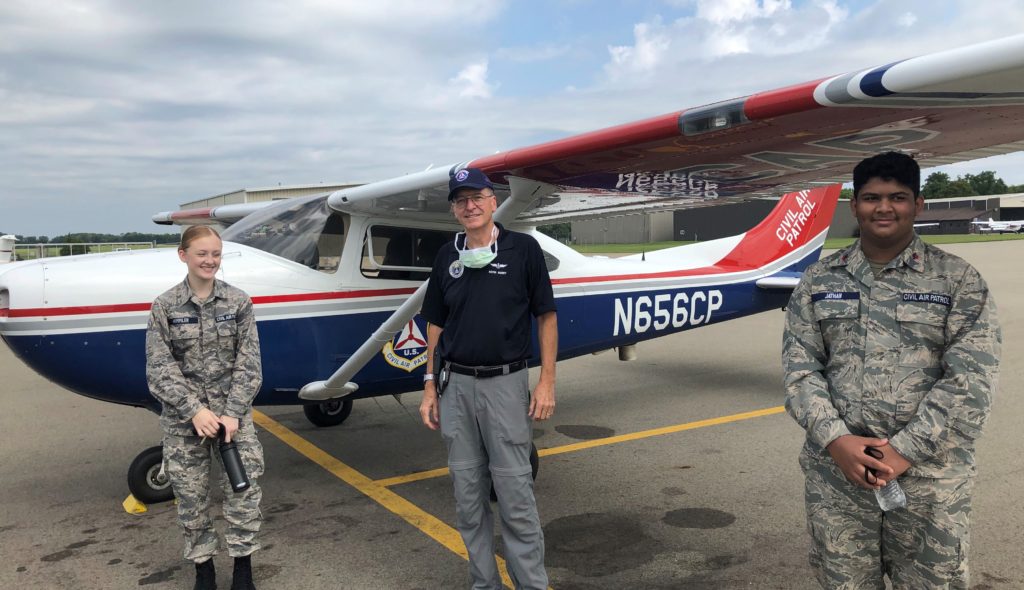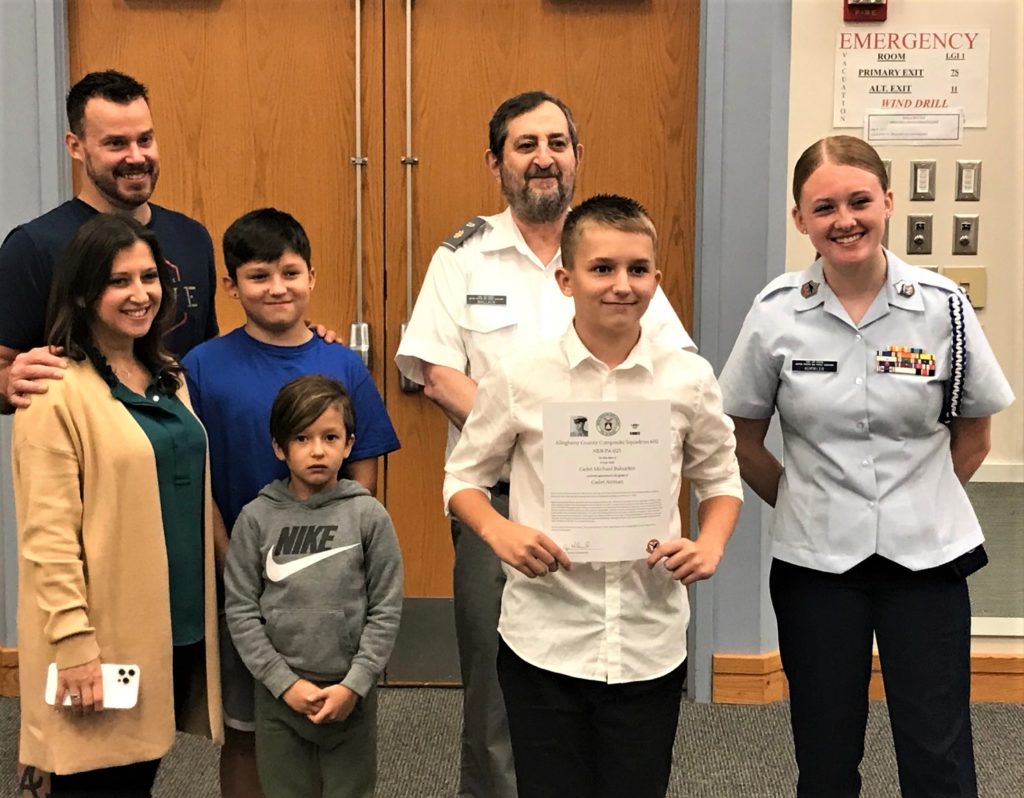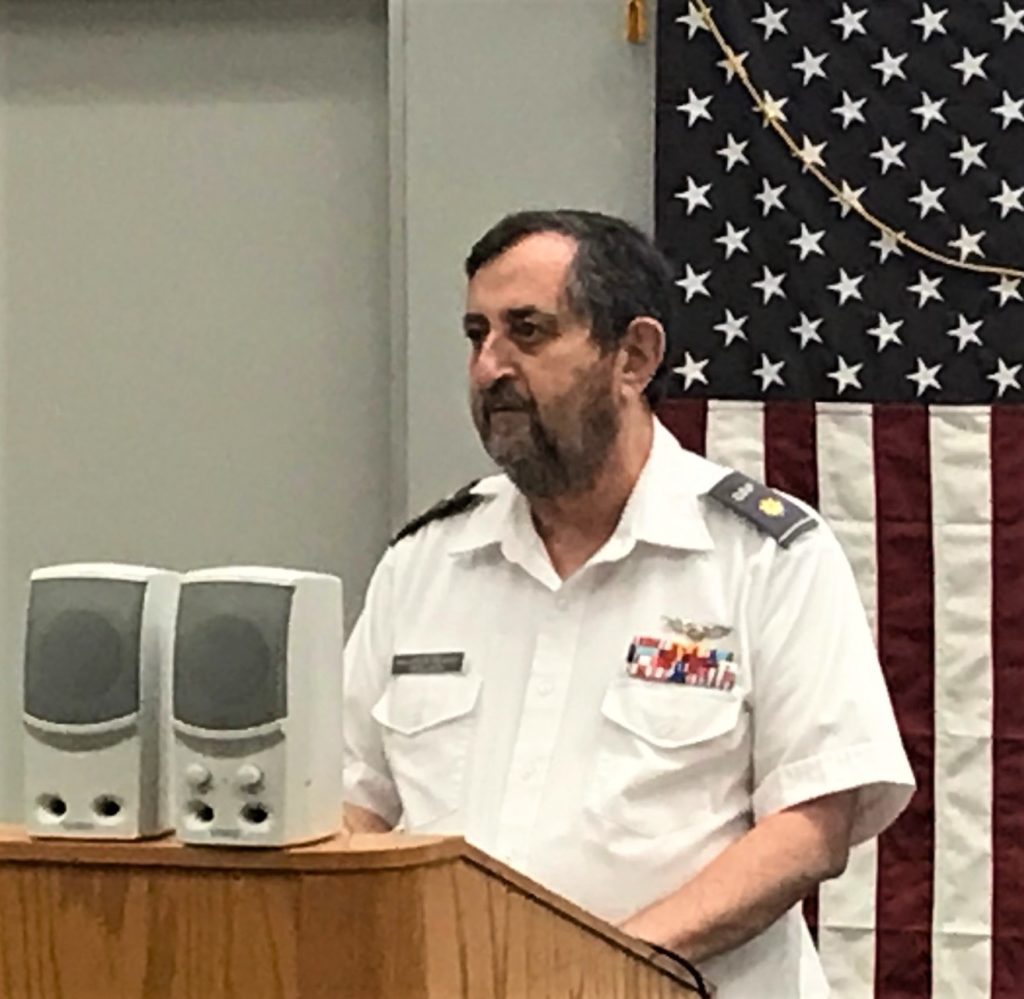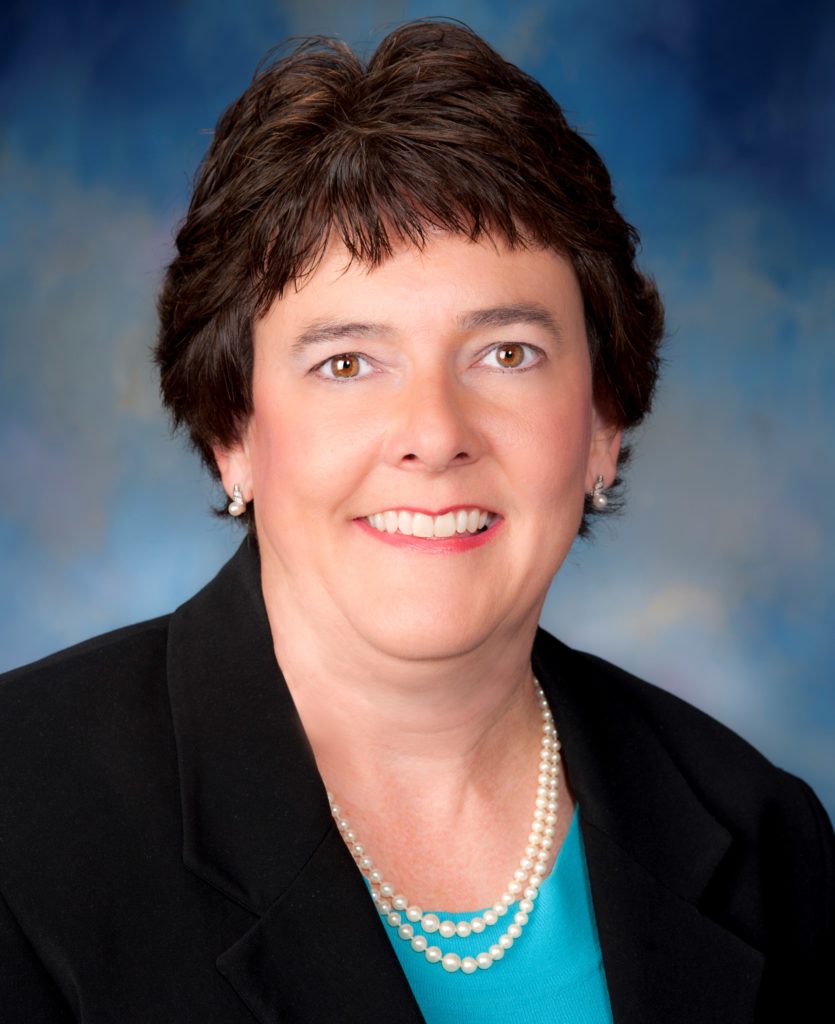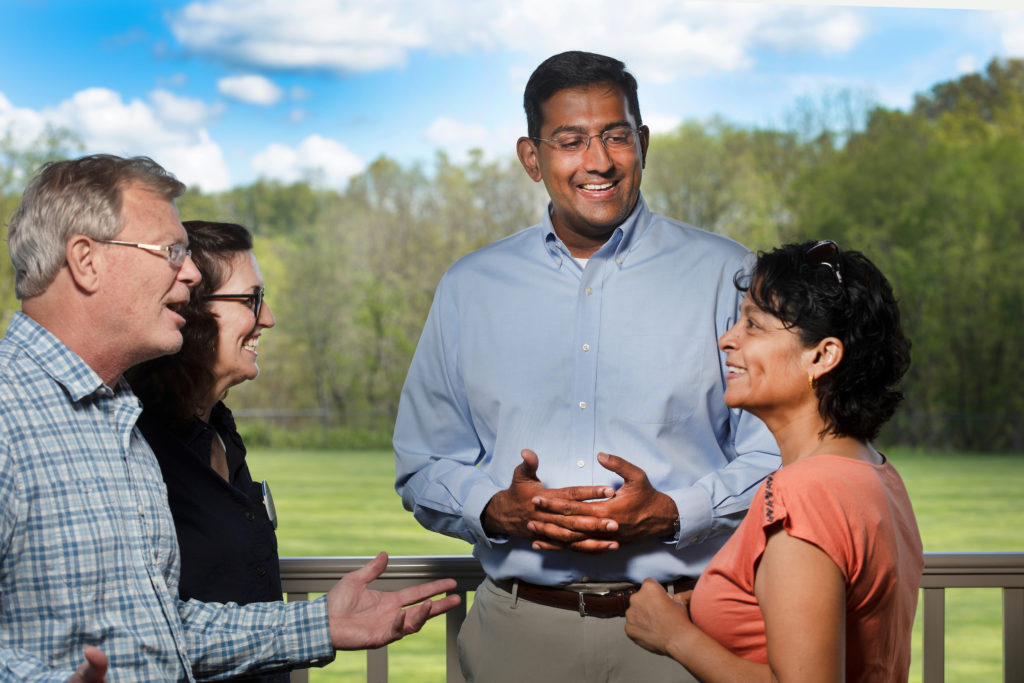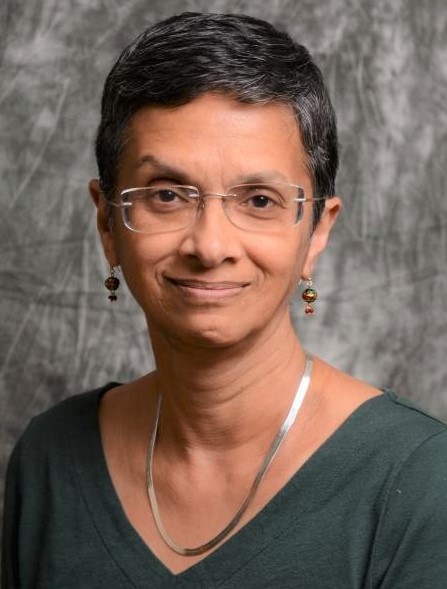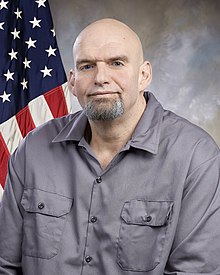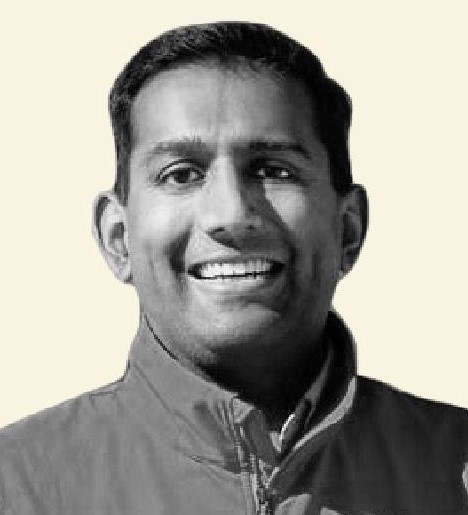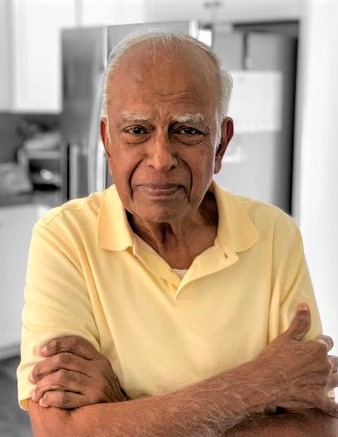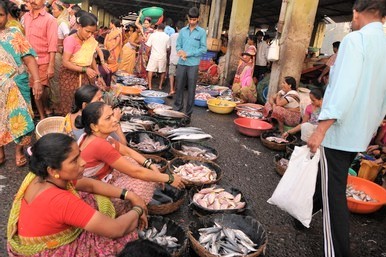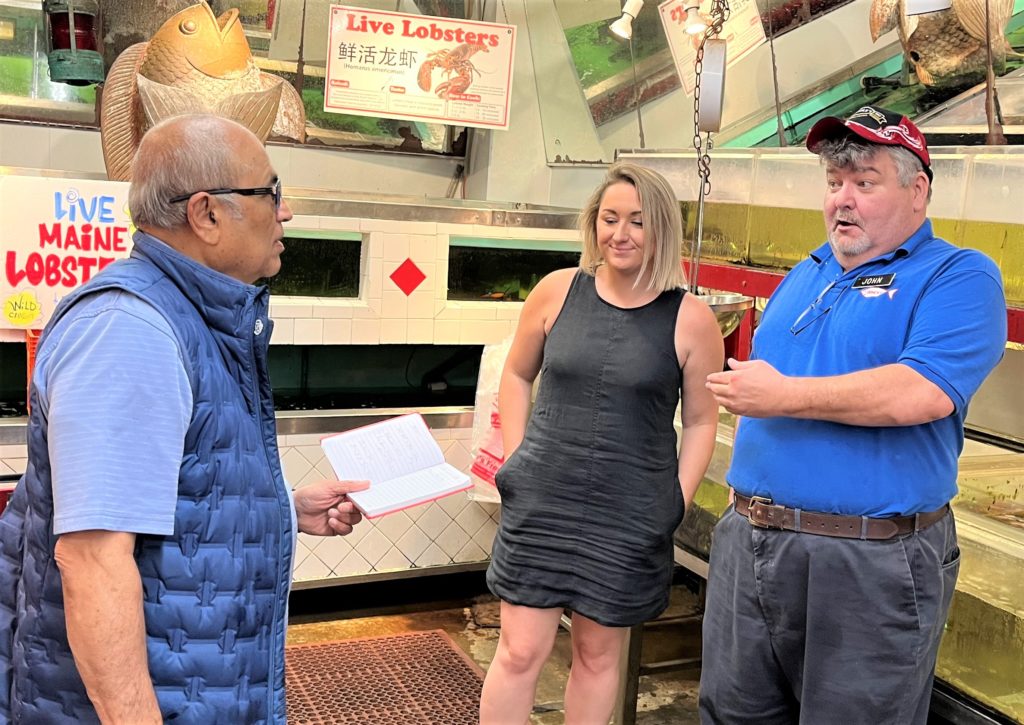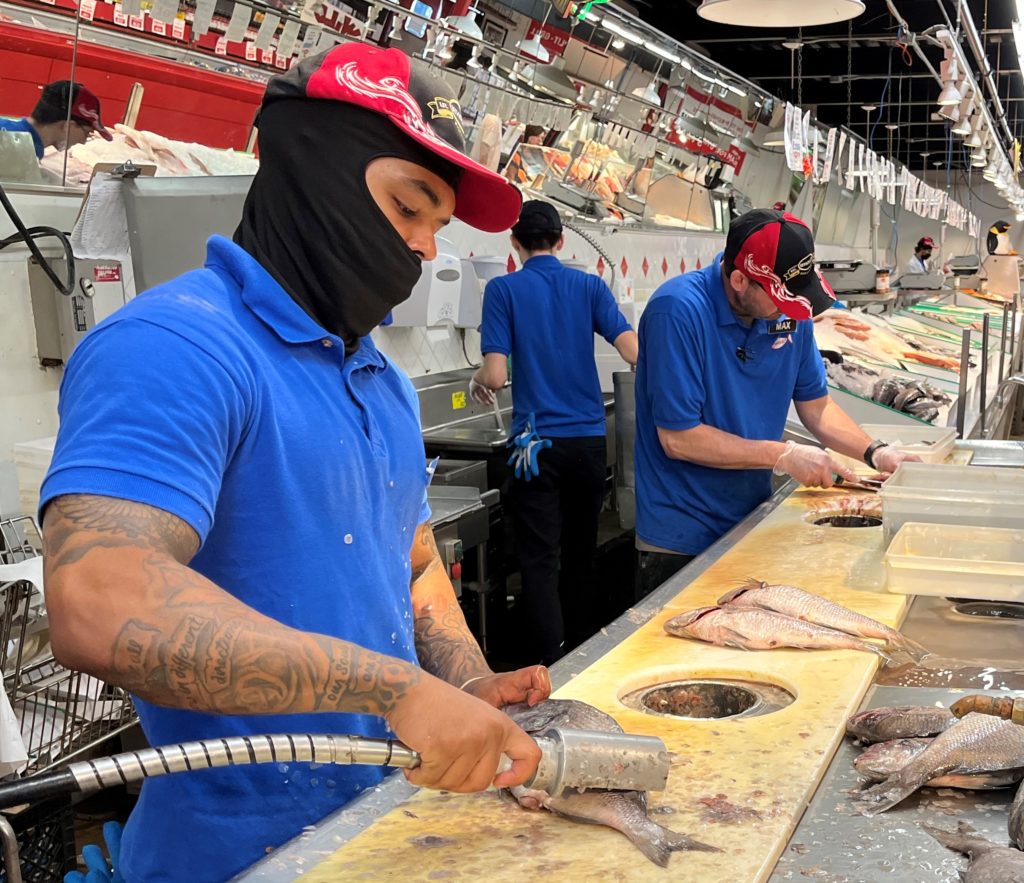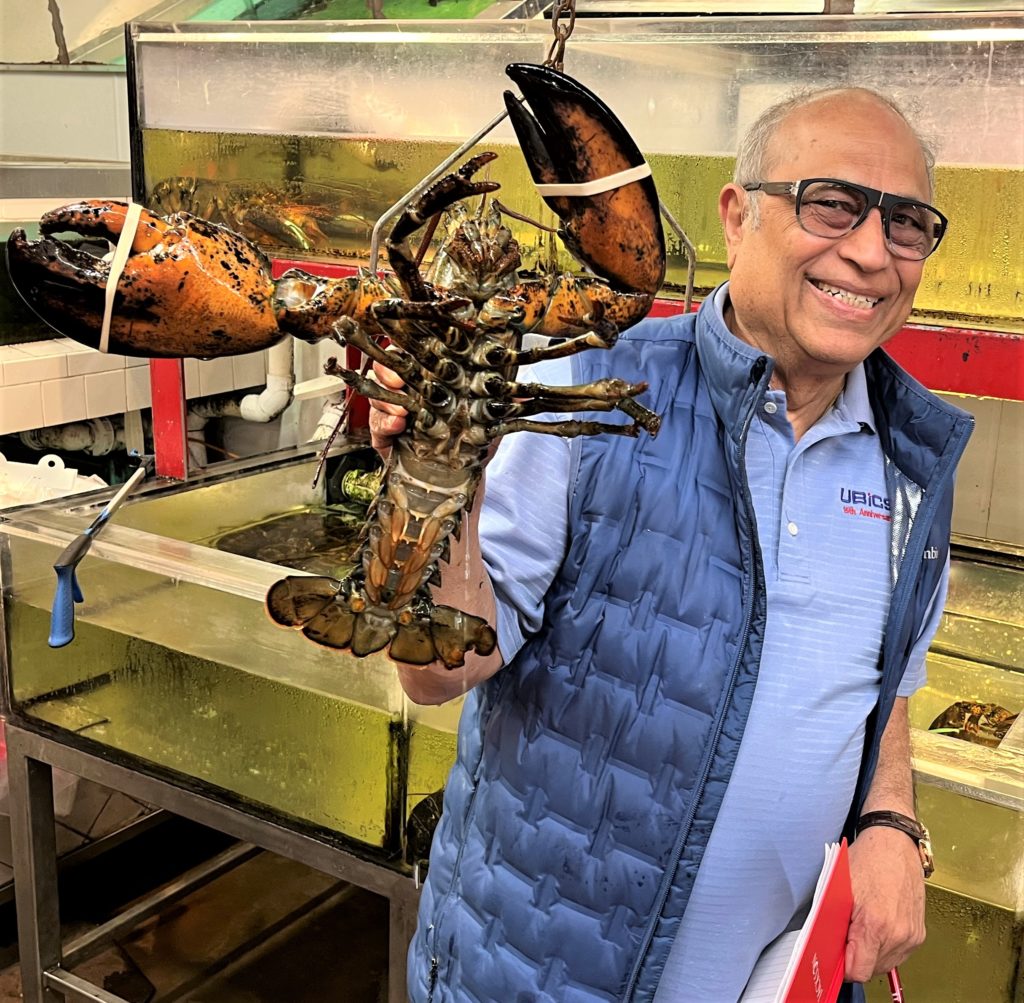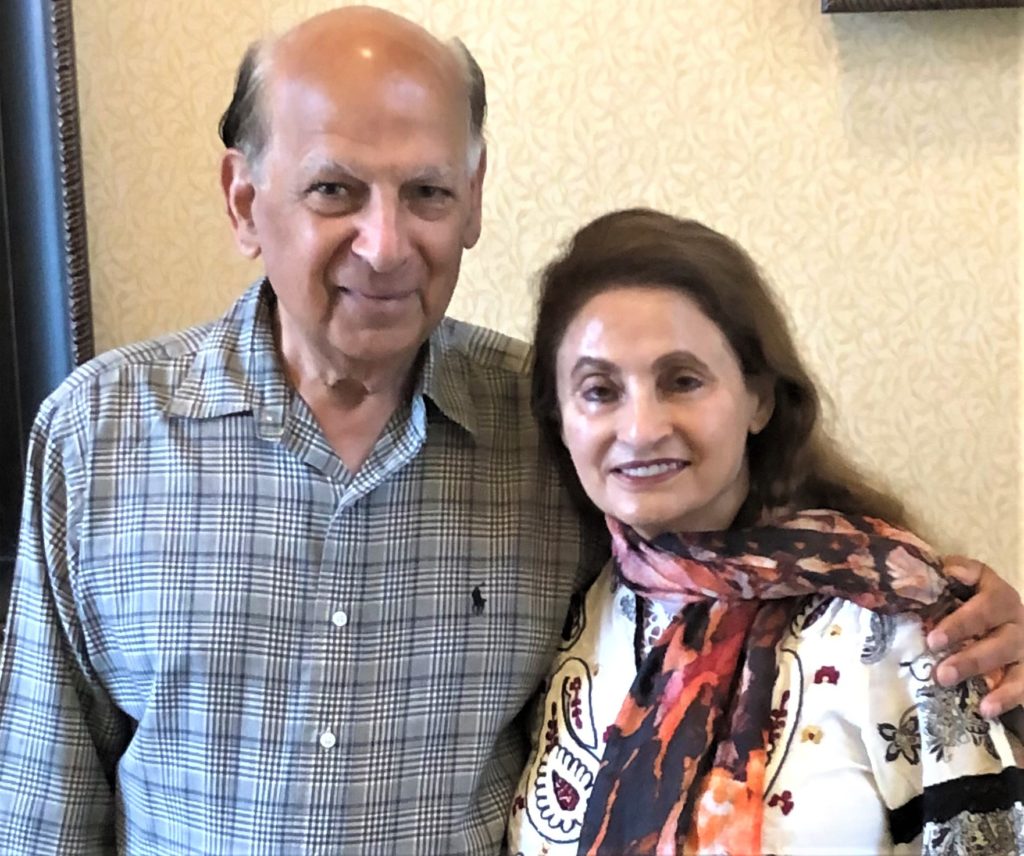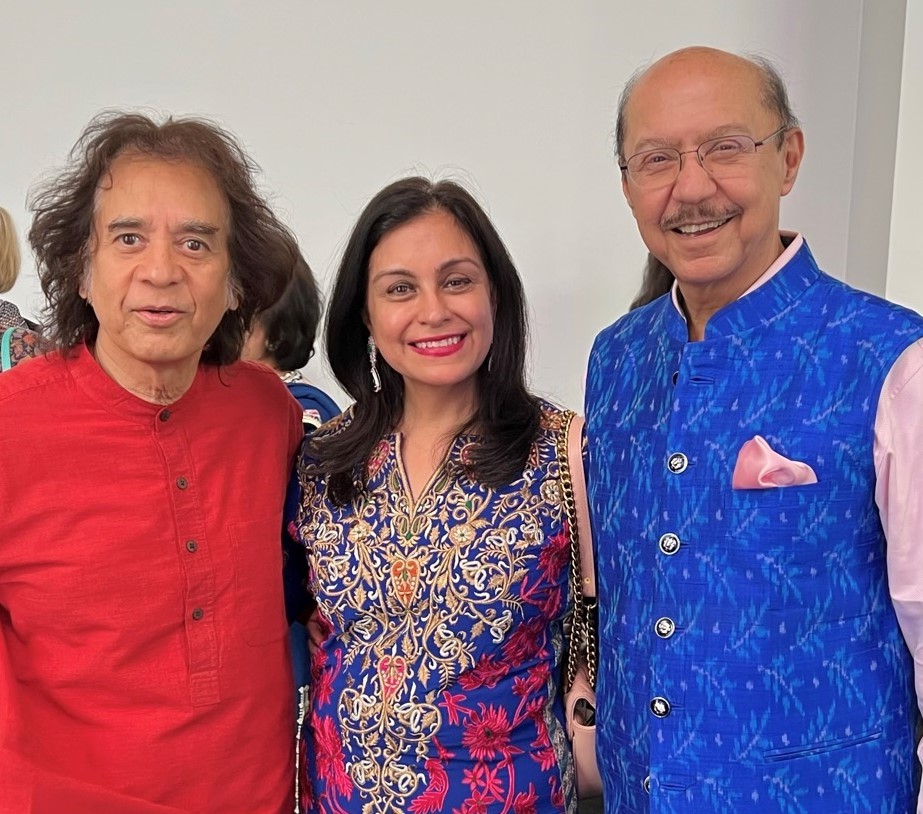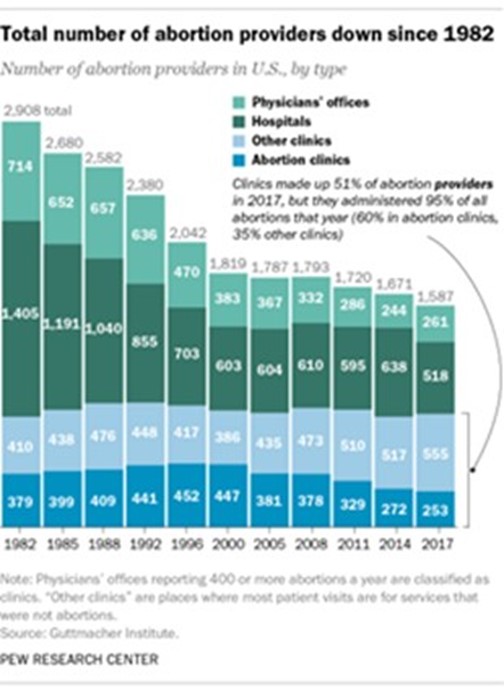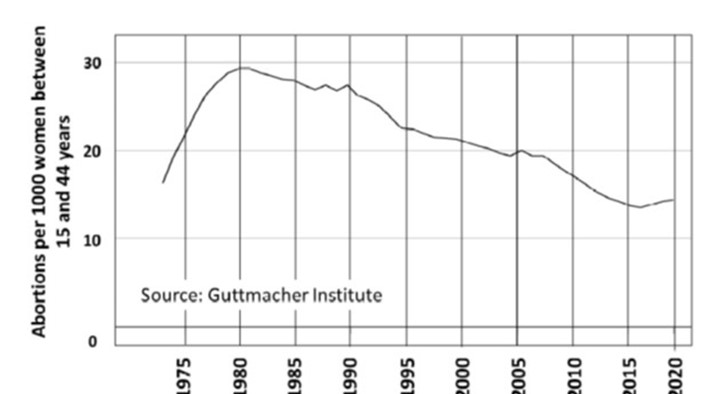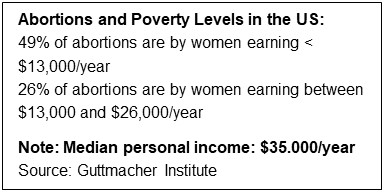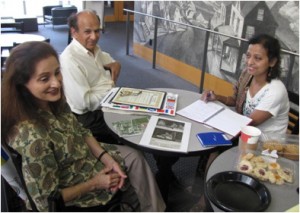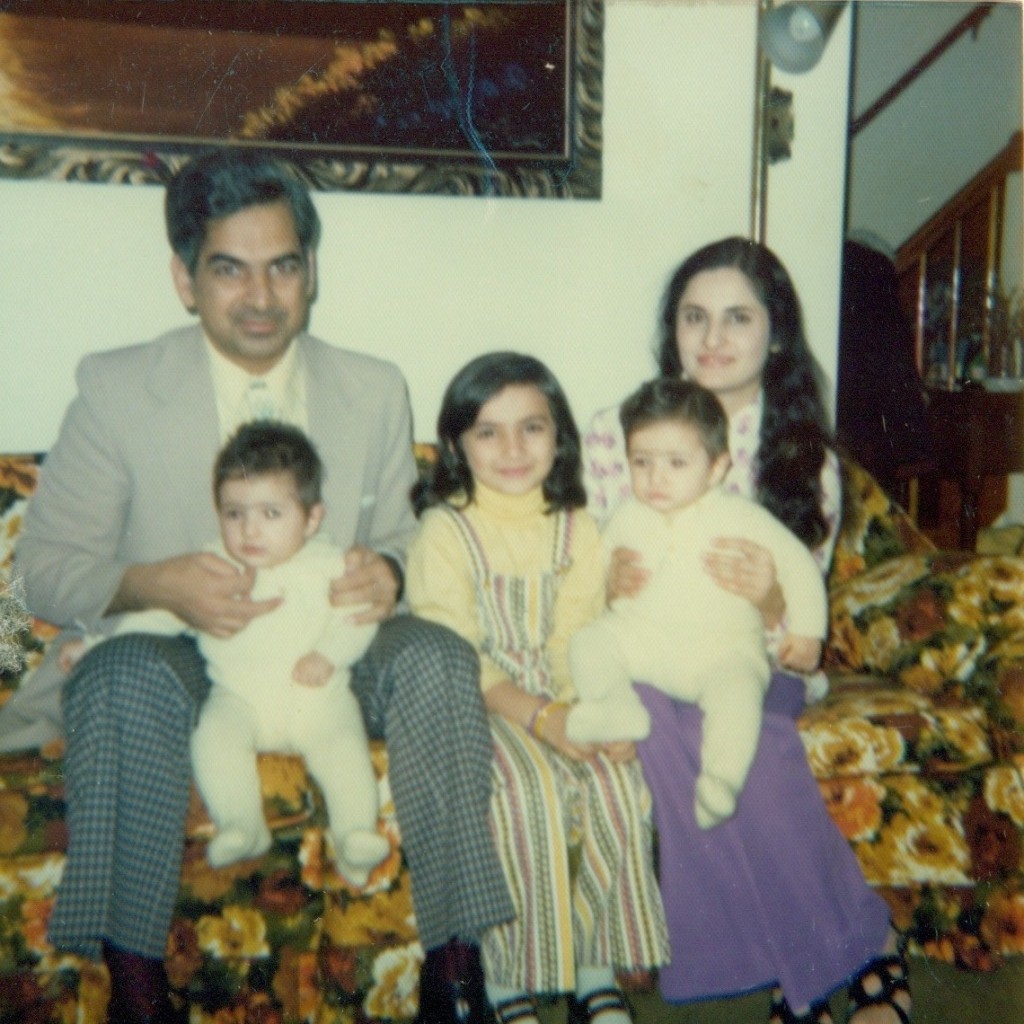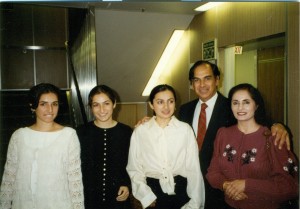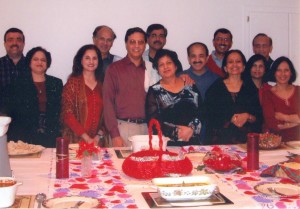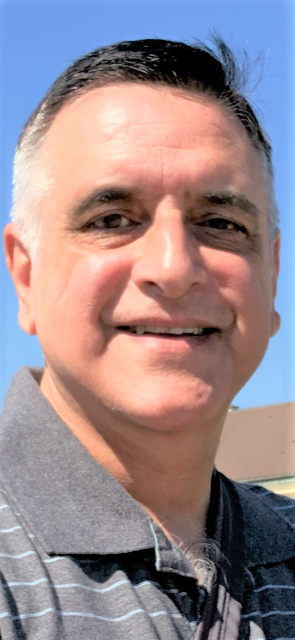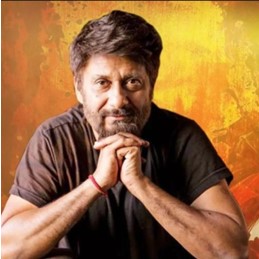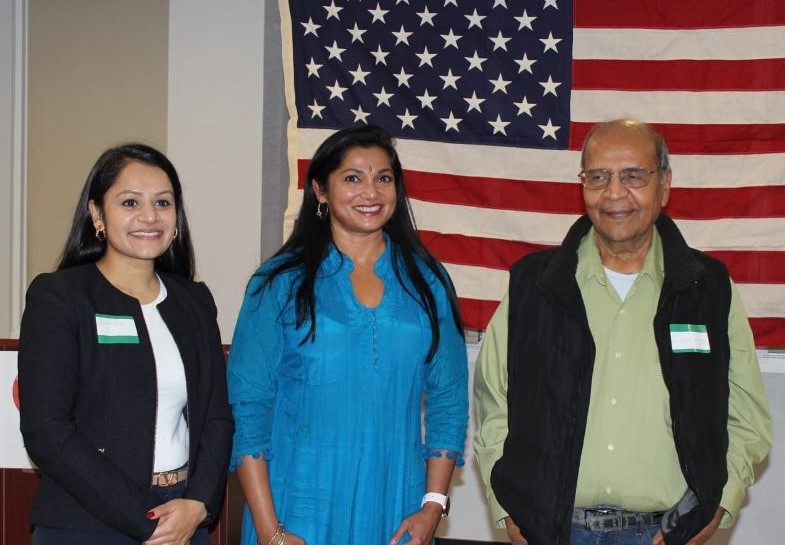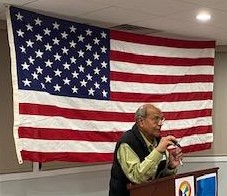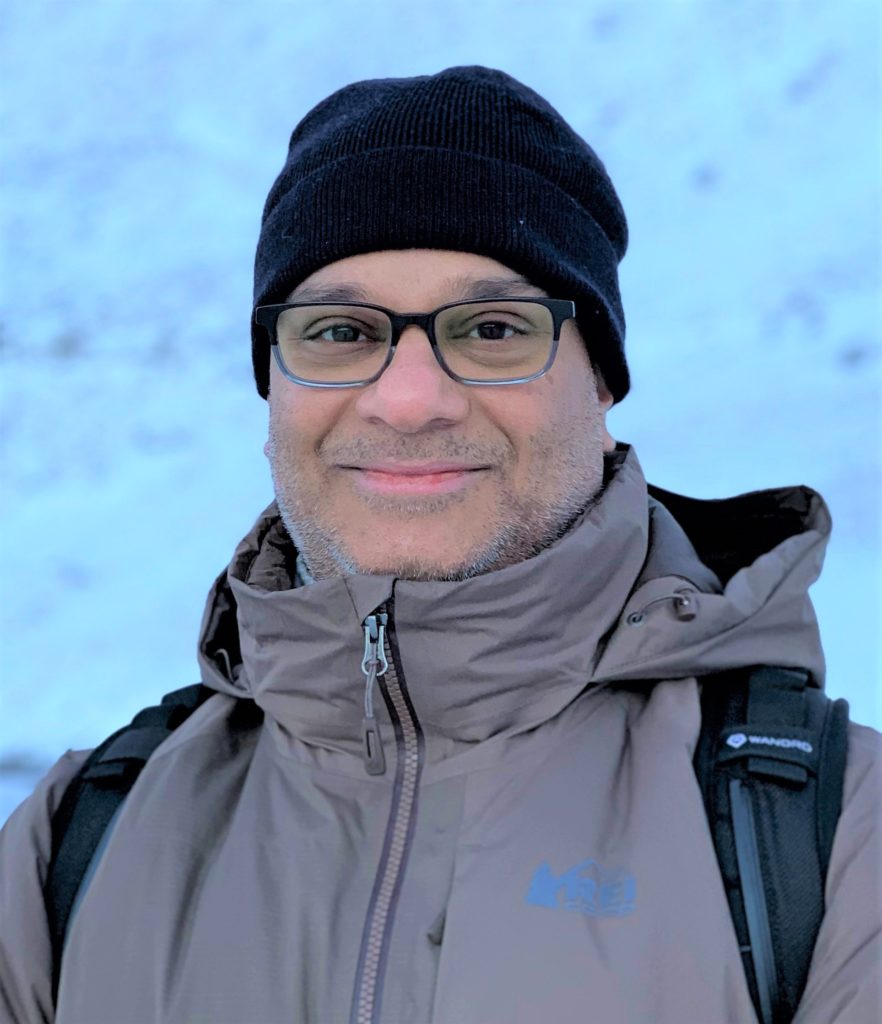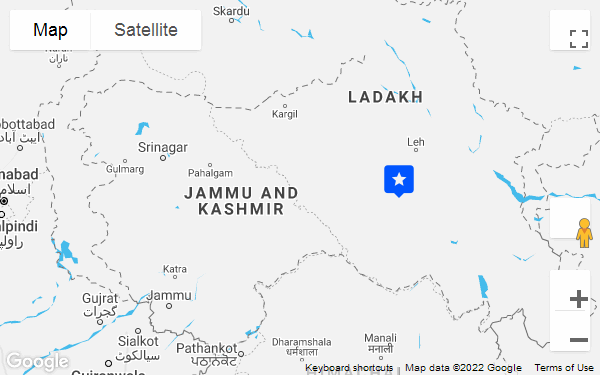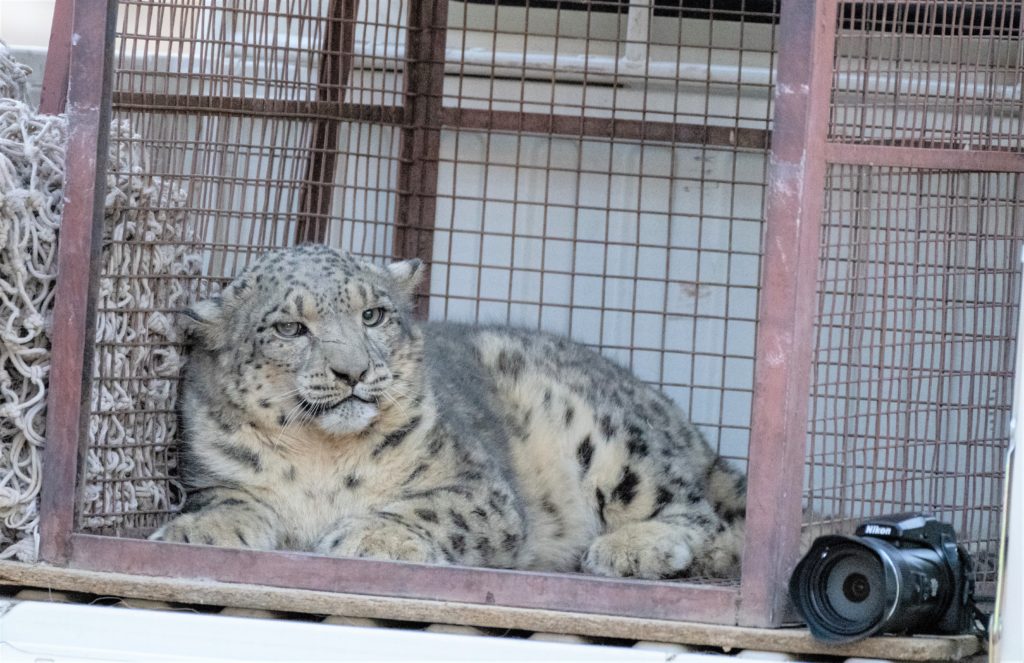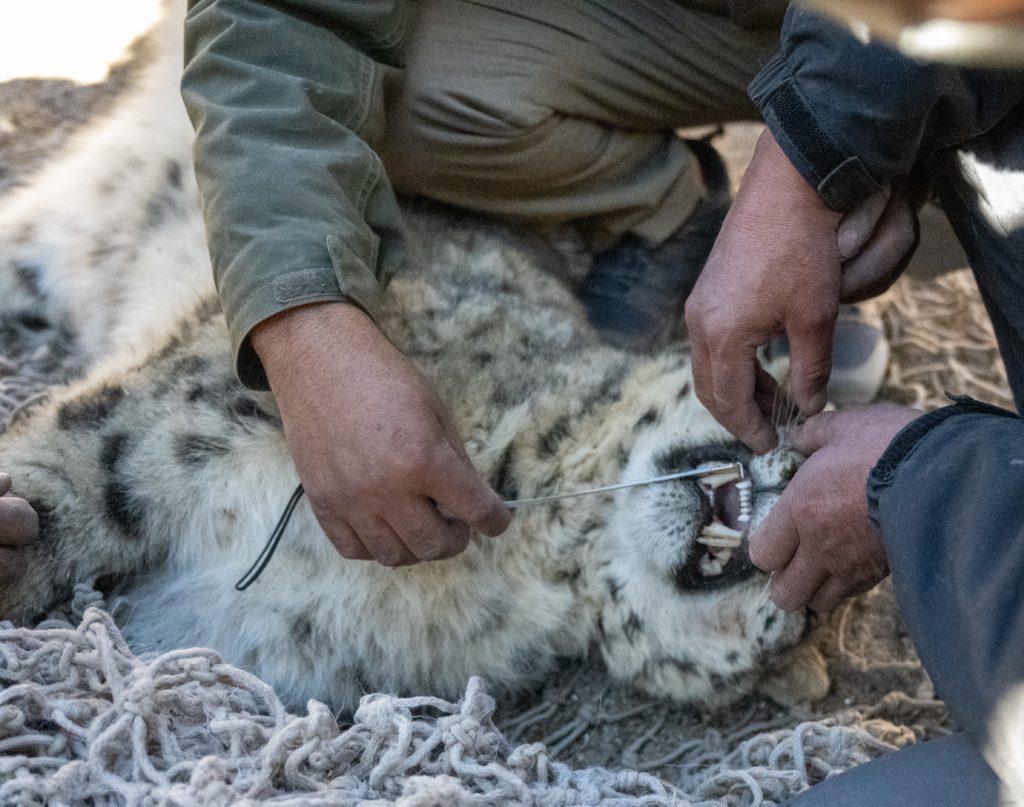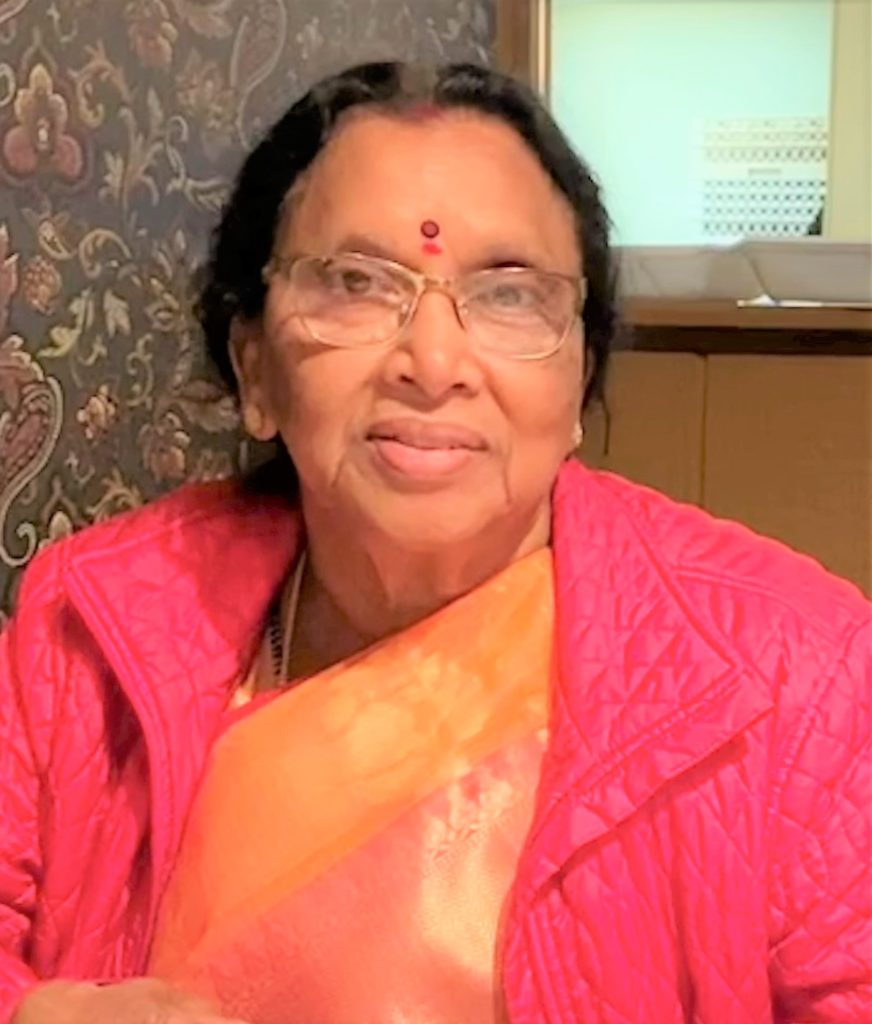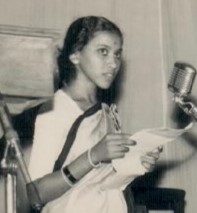Archive for category Past issues
Opportunities for Middle/High School Children at Civil Air Patrol
Posted by admin in October 2022, Past issues on September 25, 2022
How many of you have heard of the Civil Air Patrol (CAP) and their activities across the nation? Maybe a few. And among school-going children focused on their curricular activities, even less.
Civil Air Patrol, an organization of citizen airmen, was formed in 1941 during the early days of World War II, committed to volunteer services to America. Focused to mobilize the nation’s civilian aviation resources for national defense during WW II, CAP has evolved over the last several decades into a premier public service organization that still carries out emergency service missions, when needed, in the air and on the ground, and much more.
As an auxiliary of the U.S. Air Force, CAP is there to “search for and find the lost, provide comfort in times of disaster and work to keep the homeland safe.” Its tens of thousands of volunteers scattered across the nation devote their time, energy, and expertise toward the well-being of their communities, while promoting aviation-related fields through aerospace/STEM programs and helping shape future leaders through its cadet program.
CAP volunteers serve America’s communities, save lives, and help shape the future with its core values of Integrity, Volunteer Service, Excellence, and Respect. CAP’s programs on Aerospace Education, Cadet Services and Emergency Services, are funded by the US Air Force and the local chapters’ fundraising activities.
In August, I went to a weekly meeting of CAP Squadron 602 held at the Baldwin High School close to the Allegheny County Airport in West Mifflin. The Squadron 602 of CAP is located at the Allegheny County Airport (airport code AGC) in West Mifflin.
Incidentally, AGC, a fully functional airport within the city limits of Pittsburgh, has a long and unique history. Built in 1931, it was the third largest airport in the nation with hard-surface runway, decades before the Pittsburgh International Airport came into being. More details here: www.tinyurl.com/AGC-Airport-Pittsburgh and here: www.flypittsburgh.com/allegheny-county-airport.
The classes at Baldwin High were conducted under the guidance of Major Naor Wallach (e-mail address here) , Pennsylvania Director of Recruiting and Retention of CAP’s Squadron 602. The module they showed was on how they solved the problem when an oxygen tank in the capsule exploded in NASA’s Apollo 13 mission’s near-disaster moon mission. NASA’s ground control folks in Houston struggled against all odds to remotely instruct the astronauts in the orbiter floating 200,000 miles above earth to fix the problem with the very limited resources in the capsule.
The CAP program is open to all middle and high school students who are either US citizens or legal immigrants (Green Card holders) for a nominal fee of $40 per year. A team of over 1500 volunteers, who have their own full-time jobs as USAF staff, railroad consultants, graduate students in universities, and others run the program nationwide.
They meet weekly completing different training modules that focus on developing leadership skills and skills to work in teams (sometimes leading sometimes following), ER services, aerospace/STEM education, physical fitness, and character building. In programs with school kids as the trainees, they use real life examples of how crises unfold — many of them one of a kind happening for the first time. The students are shown examples of how to form teams with the required skills and temperament, how to brainstorm the issues to define the scope, and how to assign priorities and assess progress and performance, and how to make changes in the approach as the situation dynamically changes.
For middle and high school students, programs in the Civil Air Patrol offer great opportunities to acquire skills on how to lead and take part in teams to accomplish any set goals, how to communicate clearly and precisely with peers and seniors in any organization. And the training they get in their formative years may even open opportunities for them in ROTC programs in the US Air Force, commercial flying, Medevac flights, or aeronautical engineering in universities. For more information, visit GoCivilAirPatrol.com or contact Major Naor Wallach (e-mail address here). ∎
Elect Arvind Venkat, MD to the State House
Posted by admin in October 2022, Past issues on September 25, 2022
By Martin Karl and Cathy Poole, Co-Chairs, Franklin Park Democratic Committee
The last few years have been extraordinarily challenging for our families and communities. A once-in-a-century public health crisis, economic challenges, disruption of our kids’ education, threats to school safety, attacks on the very foundations of our democracy, and now, the possibility of ending reproductive rights – the list goes on and on. Our state legislative leaders are critically important to address all these issues. In this election year, the communities of Franklin Park, McCandless, Ohio Township, Kilbuck, Emsworth, Ben Avon, Ben Avon Heights, and Western Hampton Township have the opportunity to elect a capable member from the Indian American community to represent them in the State House in Harrisburg. He is Dr. Arvind Venkat, son of Indian immigrants and the Democratic candidate for the 30th District. He will ensure that we have bold leadership in addressing all these important challenges.
We have gotten to know Arvind over the last six months in his campaign to represent the communities of our district. From the beginning, he has emphasized his background as an emergency room physician with the privilege and responsibility of treating our neighbors in their time of greatest need. Arvind recognizes that just like there is no Republican or Democratic heart attack, we need leaders who will work for all of us, setting aside partisan extremism to solve problems in our community. Having worked on the frontlines of the pandemic, Arvind knows we have under-invested in public health, public safety, and public schools, leaving us vulnerable to the disruptions we have seen. He recognizes that we must fully fund these services to be there for all of us when needed.
Over the last few months, the stakes of this election have only risen. With the US Supreme Court overturning the federal constitutional right to an abortion, the future of women’s reproductive freedom is on the ballot. Similarly, whether we enact commonsense gun safety laws to prevent school shootings and reduce gun violence will be decided in Harrisburg. Finally, whether we continue to nurture our democracy by ensuring that a) every eligible voter has access to the ballot box, and b) our elections, regardless of their outcome, reflect the will of the people, will depend on the members we elect to the General Assembly in Harrisburg.
As a father, husband, emergency physician, member of the Indian American community, and long-time resident of the North Hills, Arvind will be the right representative for us in Harrisburg. He will ensure that our communities are cared for and protected. We are proud to support his candidacy for the State House and urge all voters in our communities to vote for Arvind this fall.On election day this November, vote for Dr. Arvind Venkat.
You can reach out to his team at his website www.VenkatforPA.com. ∎
Why I am Voting for John Fetterman for US Senate
Posted by admin in October 2022, Past issues on September 25, 2022
By Mary Ganguli, Pittsburgh, PA
Editor’s Note: Mary Ganguli lives in the Point Breeze neighborhood of Pittsburgh. She is Professor of Psychiatry, Neurology, and Epidemiology at the University of Pittsburgh School of Medicine and School of Public Health.
I first heard of John Fetterman while he was the Mayor of Braddock, a small Mon Valley municipality, which was once a bustling, vibrant, steel town, but never recovered after the steel industry collapsed in the late 1970s. John is not originally from Braddock; the details of how he, a Harvard graduate in public policy, moved to Braddock make a fascinating read.
John, a Democrat, currently the lieutenant governor of Pennsylvania, is contesting for the open US Senate seat from PA in this November’s mid-term election. Here are his positions (www.johnfetterman.com/issues) on the issues that matter to us as Pennsylvanians.
John became a national media sensation early in his career. This is partly due to his unusual appearance and demeanor — 6’ 8” tall and muscular, a casually dressed, straight-talking man of the people, and not the typical suit-and-tie equivocating politician.
I attended a Pitt Public Health graduation ceremony in 2014 when John was the commencement speaker. His Harvard crimson hood looked like a mere ribbon over the black academic robe draped on his giant frame. He congratulated the graduates, reminding them that they were graduating in the beautiful Carnegie Music Hall built with the steel made in Braddock. He shared the desperate situations of the poorer Braddock families whose homes lacked heating during the winter polar vortex. He then told the graduates to go out and make a difference in the world with their public health degrees — pretty much describing his own career.
I also came to know John personally in 2014 while he was the Mayor of Braddock. I was chasing him down to officiate at our son’s wedding. I had left him notes and voice mail and was wondering how else to reach him. Then, my phone rang and the voice on the other end said, “Mary, this is John Fetterman.” I started to repeat the details I had already put into my earlier messages. He stopped me abruptly, saying. “Mary, this is clearly the first wedding in your family. I have done dozens of weddings. You will have a million things to worry about, and I will not be one of those things. Just tell me when and where to show up, and what you want me to do and say, and I will be there.” And he did. Since then, the Fetterman family has come over to our place for dinner and we found that John has a secret passion for Indian food (gobi mattar is his favorite).
John met with the Indian American community in the Pittsburgh area and with the Indian American organization IMPACT in Philadelphia. John tells me he is proud to receive not only our support but also our input on the issues that matter to us. He is particularly focused on the economy, health, and education, and if elected — only we can make that happen — he hopes to serve on the relevant Senate Committees.
If he is our next Senator, he will show up as promised for us in Washington and do what needs to be done for us Pennsylvanians. So, Let’s get together and Vote for John Fetterman in the November elections. ∎
Every Election is Important — More So This Midterm Election
Posted by admin in October 2022, Past issues on September 25, 2022
Midterm elections draw only highly committed, partisan citizens to polling stations, compared with the quadrennial presidential ones. Voter apathy, particularly among independent voters, is the root cause. These independent voters, if only they go to midterm polls, can change the tone of the political discourse and outcome of elections even in partisan districts.
In both State House and the Senate in Harrisburg for the last three decades Republicans have been in control most of the time. See the table below (source: www.tinyurl.com/PartyinControlofPA-StateHouses):
For the last twelve years, in the General Assembly’s both chambers, the GOP has been in the majority, with a Democrat in the Governor’s office for the last eight years. In 2018, only with a Democratic governor, the state was saved from the GOP-controlled General Assembly gerrymandering the electoral districts to unfairly benefit them, when they redrew the electoral districts. See the article here: www.tinyurl.com/PA-RedistrictedMaps. In this background, this November, three elections are important:
1. For Governor’s office: In the November election, it will be an uphill task for Democrats to gain control of either chamber in the General Assembly in Harrisburg. However, the chances for individual house districts have improved because of the redistricting of the electoral map. So, a Democrat in the Governor’s office is necessary for checking the GOP’s muscle power in both chambers of the General Assembly. Besides, the GOP gubernatorial candidate Doug Mastriano’s extremely conservative position on women’s reproductive rights is troublesome after the Supreme Court overturning Roe v. Wade earlier this year. Democratic gubernatorial candidate Josh Shapiro is moderate on this important issue. We need to elect him as our governor. His veto power will have a moderating influence on the GOP-controlled General Assembly.
2. US Senate: Our Lt Gov. John Fetterman is the Democratic candidate for the US Senate. He is known to our readers as the mayor of Braddock. Mary Ganguli in her article is persuading voters to send Mr. Fetterman to the US Senate. Besides, his GOP opponent, the TV morning show star Dr. Mehmet Oz, appears clueless to the needs of our moderate working class voters’ anxieties and needs.
3. Pennsylvania House District 30: Arvind Venkat, a practicing ER physician, is trying to expand his horizon beyond ER medicine. He wants to represent District 30 in Harrisburg’s House of Representatives as a Democrat. Martin Carl and Kathy Poole are persuading voters in their write-up to vote for Arvind Venkat.
So, on November 8, please go to the polls and discharge your responsibility to do the right thing. ∎
The Difference Between the Old and the New
Posted by admin in July 2022, Past issues on July 7, 2022
From time immemorial in India, rivers have been used as a metaphor. Examples: Hinayanam (literally the Small Vehicle or Boat) and Mahayanam (Big Vehicle or Boat) in Buddhism, samsara sarovar (the sea of life), and teerthankaras (the Boatmen Who Help to Cross the River) are the Jain masters.
We have rivers all over India that people need to to cross over for going from anywhere to everywhere.
No wonder, Urdu poets too have used rivers and boats as metaphors in simple-sounding shers (two liners). Here is one by Akbar Allahabadi (1846-1921) that Harish Saluja sent me sometime back, also providing me with its translation:
The difference between old light and the new light is only this:
One can’t find the boat; the other can’t find the shore.
In Indian languages, there is more to any two-liner doha of shayiri than its literal translation. The light the poet talks about is insight. The “Old” has the insight to see the shore afar, but not the resources or the strength to reach there. And the “New” has the resources and strength, but does not know where the shore is. This is the ultimate paradox of life.
Bus Driver’s Error Takes Kerala Pilgrims to the Goa Beach 300 Kilometers Away
Posted by admin in July 2022, Past issues on July 7, 2022
Kerala could be the state with the highest literacy rate and better social indicators in the aggregate. But aggregate numbers do not tell about individuals as this story shows.
In May 2022, the Kerala State Transport Corporation introduced an air-conditioned sleeper bus service from its capital Tiruvananthapuram to Kolluru Mookambika temple, the famous Devi temple and pilgrimage destination for Keralites, north of Mangaluru in Karnataka. On the inaugural trip, on the coastal highway, late at night, the driver missed the exit to Mookambika temple and continued straight, not recognizing that he missed the exit.
Passengers deep asleep in the bus were expecting to be at the Mookambika temple at dawn. When the passengers opened their eyes in the morning, they found themselves on the beach in Goa, 300 kilometers away from Kolluru, seeing scantily clad gora men and women tourists playing beach volleyball. The driver blamed Google map for wrong directions. ∎
A Letter to the Editor
Dear Editor:
Enjoyed the last page article Wicked Tamil Nadu Humor in the April issue. Similar things happens here in the USA too, right here in our own neck of the woods. Across from my housing plan on Beaver Grade Road, in Moon Township our Port Authority contractor built this bus stop.
The bus route on my street was never active and I never saw a single bus on this road. Finally the Port Authority officially discontinued the route as uneconomical on account of the lack of riders.
However, after the bus stop was installed, contracts were awarded for ad hoarding. Maybe the contractor rushed to finish the job before he got notification of the cancellation!
Currently, even with no bus plying on this road, every every few months the advertising contractor comes and replaces the poster! — Mahendra Shah, Moon Township, PA ∎
The Reptilian Brain on Hyperdrive
Posted by admin in July 2022, Past issues on July 7, 2022
Arun D. Jatkar, Monroeville, PA
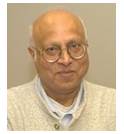
When my wife and I arrived in the US in 1973, we lived in Salt Lake City, Utah. I was a graduate student at the University of Utah and my wife Shobha was a graduate student at Brigham Young University. A Mormon land through and through. I could write many anecdotes about our experiences while we pursued our PhD degrees, but recent events in the body politic of the USA take my mind elsewhere.
During our four years of living in Salt Lake City, we watched with awe and wonder the narrowly missed impeachment of President Nixon. Such a thing was so much against the very grain of our cultivated reverence for Prime Ministers, Presidents, and many other past and present figures of national importance. It taught us what democracy is all about and we said to ourselves, “If only Indians stopped chanting ‘Indira is India and India is Indira!’”
The year 1976 was the 200th anniversary of the Declaration of Independence of the American colonies from England. We were bombarded by the conviction deeply rooted in the American psyche that “the American Constitution is divinely inspired.” In India, the only divinely inspired words are the four Vedas. It was also the time that the ERA (Equal Rights Amendment) was on its way to being ratified in several states of the USA.
Move forward to 2022. Despite the abundantly proven fact that there is not a grain of truth in ex-President Donald Trump’s irrational and evil claim that the 2020 election was stolen from him, he and his allies in the House and the Senate in Congress are unfailingly bent upon bombarding the whole country with that Goebbels-style lie (Goebbels was Hitler’s Minister of Propaganda, whose mantra was, “A lie told once remains a lie, but a lie told a thousand times becomes the truth”.) With the ex-President’s continued hold on a vast cross section of Republican voters, the “divinely inspired” constitution is increasingly becoming a sorry victim.
When I look at all this, it makes me think that a nation may land a man on the moon and a robotic explorer on Mars; but its primitive reptilian brain simply refuses to become sophisticated. And right now, that reptilian brain is on hyperdrive! ∎
The landmark Roe v. Wade decision of the Supreme Court of the United States in 1973 had remained unshaken until now. But it did not survive the majority opinion of the current Supreme Court. As if that was not cruel and evil enough (see the lead article by Premlata Venkataraman), one of the six justices who ruled to overturn the Roe v. Wade landmark decision of 1973 has further suggested that the Supreme Court should also reconsider several constitutional rights!
Obituary: Mani Balu (1935 – March 28, 2022) Soft-Speaking Pediatrician, Helpful & Caring
Posted by admin in July 2022, Past issues on July 7, 2022
By Sudha Dixit, Wexford, PA
Sudha Dixit, a long-time friend of Mani Balu, lived in Uniontown before she and her husband moved to Wexford. With her husband Niranjan practicing medicine, Sudha lived in Uniontown for decades as Mani Balu’s neighbors.
Dr. Mani Balu, a long-time resident of our area who practiced pediatrics in Uniontown for several decades, suffered a cardiac arrest on March 28, 2022, and passed away even before the emergency medical staff arrived. He was 87.
Mani Balu was the youngest of six siblings, born in 1935 in Thoothukkudi in Tamil Nadu. Mani completed his medical degree at Kilpauk Medical College in the late 1950’s. He was posted as a civil assistant surgeon for Tamil Nadu in various small towns. He married Shantha in 1961. They had two children, Ravi, and Latha, while in India. The Balus came to the United States in 1968, with Mani wanting to train in pediatrics. He studied pediatric endocrinology in New York’s Queens General and Long Island Jewish hospitals. After completing training, the Balus moved to Big Stone Gap, Virginia. Later, in 1993 they moved to Uniontown, PA, with Mani joining Dr.Thomas D’Auria to practice pediatrics. After Dr. D’Auria’s retirement, Balu continued and expanded the practice in Uniontown, with three pediatricians joining him.
Dr.Mani Balu retired from his practice in Uniontown in 2015 and moved to Monroeville to be close to their son, Ravi Balu. In his retirement, Mani Balu annually went to Chennai and spent several weeks in Chengalpattu, treating leprosy patients. With Shantha’s dedicated support, he silently continued his philanthropic work there from his own resources, be it for leprosy relief efforts or funding education for young girls and underprivileged children.
Balu was an avid reader of the classics and Hitchcock. He was an ardent fan of Raj Kapoor songs and cricket. With his friends practicing medicine in Uniontown, Balu would watch cricket matches and travel to many places. Personally for me, Balu was my Pediatric Help Hotline while we were helping our daughter raise her two children. Mani Balu was known for his humility, generosity, compassion, and openness towards his friends. The Balus bore their painful personal losses with stoicism, fortitude, and resignation.
Dr. Mani Balu leaves behind his wife Shantha, and his son Ravi Balu, his daughter-in-law Raji, his two grandchildren, and a large number of his friends. Mani Balu was cremated on March 29, with Pandit Gopala Bhattar helping Dr. Balu’s son, Ravi, with the Vedic cremation rites. Dr. Mani Balu’s family organized a memorial service in Monroeville in early April with a number of his friends in attendance. ∎
From the Kolis (कोळी) to The Wholey’s — A Seafood Story
Posted by admin in July 2022, Past issues on July 6, 2022
By Deepak Kotwal, Squirrel Hill, PA
In early June, Deepak Kotwal, a Maharashtra native and a seafood connoisseur, visited Wholey’s in the Strip District to write about their business and how they cater to the seafood lovers in our area. Note: The Kolis (कोळी) are the Marathi fishing community that dominates seafood harvesting and trading in Maharashtra.
When Indians first settled in the Pittsburgh area in the 1960s, pescatarian Indian immigrants from Mumbai and coastal regions of Maharashtra savoring paplet (pomfret,) bombeel (Bombay-duck) and surmai (kingfish), and the macher-jhol-loving Bengalis, whose favorites are hilsa and rohu, and from all over the peninsular and other regions of India were thrilled to “discover” Wholey’s in the Strip District. They are the largest seafood retailer in Southwest Pennsylvania. Local supermarkets then did not have much of a seafood section. Until fish-loving Indians in and around Pittsburgh found out about Wholey’s, their options were frozen fish sticks and canned tuna to whet their cravings for seafood.
The word Koli (कोळी) in Marathi refers to the traditional Marathi fishermen community that dominates the seafood harvesting and trading business in Maharashtra. My childhood memories include shopping for fish and price-haggling, mostly unsuccessfully, with the kolanīs (कोळणी), the kolī women who managed the retail sales. Their men were on the seas harvesting their catches or getting ready for their next fishing expedition. My daughters’ childhood memories here include going to Wholey’s and holding a slippery smelt in each hand.
Besides ethnic identity, religion, language and clothing, food is an important marker of one’s cultural identity. The late Anthony Bourdain, the famed chef, author, and TV culinary travel host, showed through his TV shows, how to understand cultures through their food.
Here in the US, a land of immigrants, by necessity, new arrivals quickly adapt to the morés of the land to blend in. They switch to local clothing. Their children lose proficiency in their mother tongues in one or two generations. But they continue their culinary traditions passing them on to their children. Childhood food and taste memory is a powerful force.
There is a perception outside India that most Indians are vegetarians. But with its 7,000-plus kilometer coastlines and 400-plus rivers with over 12,000 miles of rivers and countless ponds and lakes, it is natural that seafood is a major part of the Indian diet. There are many references in old Sanskrit and Tamil literature to all types of fish and other aquatic creatures and fishermen communities. In 2000-plus year-old Tamil classics, neithal (ெநய்தல்) is the term for seashores, having unique landscape features, human settlement and activities. Here is a website listing the Indian names for a variety of different fish types: www.tinyurl.com/Fish-names-in-Indian-Languages As an aside, in India, Bengali brahmins and Saraswat brahmins in Maharashtra are seafood connoisseurs. Why some brahmins are vegetarians and others are not is a topic for another article.
Recently, I visited Wholey’s in the Strip District to inform readers of a whole range of seafood items at the store. I spoke to John McNally, a purchasing and marketing veteran with Wholey’s, and Muriel Maze, who joined the Wholey’s recently, to learn more.
In 1912, Robert L. Wholey, from an Irish immigrant family in McKees Rocks started a food distribution company dealing with poultry, meats, sausages, and coffee. His son Robert C. Wholey in 1948, after returning from his military service in WW-II, started a live chicken store in what was then known as “Diamond Market” in downtown Pittsburgh.
In 1959, the Diamond Market was converted to the current up-scale Market Square, forcing their poultry and meat-related business to move to the Strip District. It was a difficult business decision since theirs would be the first retail food store among all the wholesale shops there. It is a truism that successful businesspeople listen to their customers. Around 1960, a customer who had gone to the Chesapeake Bay area came to Mr. Robert Wholey with a large catch of crabs and asked whether the Wholey’s would put them up for sale in his store; they did. Sensing an opportunity, Wholey’s added a fresh seafood section. The rest, as they say, is history. Today, Wholey’s sources their seafood from all over the world. They even have a cooked food section as well, the most popular item being their fish sandwich.
The Wholey’s has a significant customer base from among the people of Indian origin living in this metro area. John explained that Indian customers like to buy the whole fish and have it cleaned by the store’s skilled staff. Fish cleaning requires special skills and there is in-store training for the job, which commands better pay, and has a much lower turnover rate. We chatted with Mr. Yum Duong, a fish cleaning specialist with the Wholey’s for over 20 years, an immigrant from Vietnam. He is well tuned into how to prepare fish steaks, bone-in, for the Indian market.
The fish types popular among Indians are bronzini, blue fish, sea bass and catfish among others. Also popular are butterfish, a small fish that is cooked whole. Pompano and flounder remind us of paaplet (pomfret.)
The local American population sticks to boneless fillets, as most do not know how to cook and eat a whole bone-in fish. Indian immigrants who learnt to eat fish in India know that bone-in fish preparations are tastier than boneless fillets.
Raw shrimp sold at Wholey’s, as in most of America, is head-off (that is, with its head cut off). Most of the shrimp’s fat is in its head. So, when the shrimp has its head on, it tends to become mushy. Headless shrimp can retain their original crispness and texture because of the absence of fat and is preferred by Americans.
In the late 1970’s, a few fish-eating friends of ours would order head-on whole shrimp from Louisiana. We woulde pick up the 50-lbs dry-ice-packed Styrofoam box at the airport, and split the huge shipment. For a true fish-lover from India there is nothing more delectable than sucking on a curried shrimp head! I know, I know, some of you, who are used to eat shrimp the American way are probably repulsed by this. But then, food, like beer, you will agree, is an acquired taste!
When I buy a whole flounder at Wholey’s and have it cleaned at the store, I always request the cleaner to check for egg sacks inside. These egg sacks are an Indian delicacy, but routinely thrown out here.
There are those Indian immigrants who were vegetarians back home and have switched to eating fish after coming here. They learnt to eat fish in restaurants, always served as boneless fillets. These Indians generally do not like whole fish prepared bone-in and with Indian curries and spices.
Climate change, increased world demand for seafood and improvements in the mechanized fish harvesting technology have led to overfishing. While per-capita meat consumption shows a downward trend in the developed countries for health reasons, seafood consumption has increased. Naturally, some species are near extinction. Fish-farming may be the savior of some of these species. Given the increased demand for seafood, flagrant violations of international agreements to limit catches are common. The Marine Sustainability Council (MSC) and the National Oceanic and Atmospheric Administration (NOAA) are working to promote sustainable practices. Whole Foods uses a red/yellow/green rating of MSC. John McNally at Wholey’s assured me that their policy is to sell only sustainable species. It is incumbent on all pescatarians to ensure that the seafood they consume meet the level of sustainability.
The fish-loving Indian immigrant community here and Wholey’s have a symbiotic relationship: the former wanting to fulfill their desi cravings of seafood, and the latter, wanting to find a new market segment for expanding their business. The Wholey’s in the Strip District ensures that despite Pittsburgh not being on either coast of this vast country, it is not a gastronomic wasteland in the sphere of seafood delectables. ∎
Juginder and Dolly Luthra, Well-Known to Patrika Readers, are Moving to New Jersey
Posted by admin in July 2022, Past issues on July 6, 2022
By Kollengode S. and Prema Venkataraman
Juginder and Dolly Luthra, long-time residents of Weirton, WV and well-known to Patrika readers and the Indian diaspora here, are moving to New Jersey, to be close to their daughters and grandkids, in their retirement. This is a trend among Indians in their autumn years.
“There is a pang of sadness in leaving the community,” said Dolly Luthra wistfully, continuing “even as we are happy to look forward to spending more time with our grandkids.”
They raised their daughters and took part in social and cultural events around the city, as is usual in Indian communities everywhere. Soon they went beyond just participation. Living in Weirton close to the Greater Pittsburgh Indian diaspora, they were the patrons supporting Indian classical traditions of music, dance and performing arts.
Dolly recalled arriving in Pittsburgh over four decades ago with their 6-week-old twin daughters in a bassinet and another 4-year-old daughter in tow. They settled in Weirton WV to start their practice in healthcare — Juginder in ophthalmology and Dolly in dentistry.
Weirton in its heydays of the Mighty Steel starting in the early 20th century, attracted immigrants from all over Europe to run the thriving steel industry. The city organized an annual Festival of Nations in Spring to highlight the culture of the many immigrants. But this festival ended in 1948, after the end of WW II.
When Weirton revived the Festival of Nations in 2009, Juginder introduced Indian folk and classical dances in the festival to highlight the new immigrants from India settling in Weirton. He dipped into the resources available in Pittsburgh and enriched the Festival of Nations to include many dance traditions from Asia. Nandini Mandal wrote a story on this. (www.tinyurl.com/Luthras-Story-by-Mandal)
Both Dolly and Juginder are also well known for their artistic talents outside the narrow confines of their professions. Dolly acted in dramas. Juginder was the main lead in a 15-minute short movie titled Sunflower about getting old, directed by Ferris Rosati. Many of Juginder’s friends would recall his singing ghazal/shairis and other genres of Hindi songs.
The Luthras coauthored poems in the Pittsburgh Patrika. Juginder also authored poignant articles in the Patrika on his childhood as a Partition Child, when Juginder’s parents moved to India with their young kids leaving everything they had in Pakistan.
When we approached the Luthras to feature a story on Saroj Bahl, and her efforts to set up the India Nationality Room at the Cathedral of Learning in Oakland., they readily responded to our request. The Luthras talked extensively to Saroj and her husband Mohinder Bahl on this topic. Their fascinating account of how the Nationality Room came into being culminated in an article in the Patrika in 2009.
Similarly, they talked to Nandini Mandal in 2018 on her journey in Indian dance traditions through her challenging health situations (www.tinyurl.com/Luthras-on-NandiniMandal).
Making their marks in their professions and giving back to their communities (Weirton and Pittsburgh), while sharing their love of literature and the performing arts, Dolly and Juginder enriched the lives of people in our area that they called home for four decades.
We are sure they will be active on matters that interest them in New Jersey as well. Surely, we expect and anticipate that they will continue to use the Patrika as a platform for sharing with readers their poems and essays in the coming months and years. Please join us in wishing the Luthras good health and happiness in their new place, spending their times with their daughters and grandkids. ∎
Maestro Zakir Hussain’s Electrifying Tabla Recital Came Once Again to Pittsburgh
Posted by admin in July 2022, Past issues on July 6, 2022
By Nicholas J. Gigante, Vice President of Development Pittsburgh Cultural Trust, Pittsburgh, PA
Finally, Covid-related restrictions were receding further in our rear-view mirror, and we were in spring last April. In a wonderful sign that downtown Pittsburgh’s Cultural District is returning to life once again, the Pittsburgh Cultural Trust presented a return engagement of the Tabla Maestro Zakir Hussain in Triveni at the Byham Theater on April 12. Nearly 1,000 patrons came to the recital on a Tuesday and thoroughly enjoyed the performance by Mr. Hussain, the tabla superstar, performing along with Kala Ramnath on the violin and Jayanthi Kumaresh on the veena.
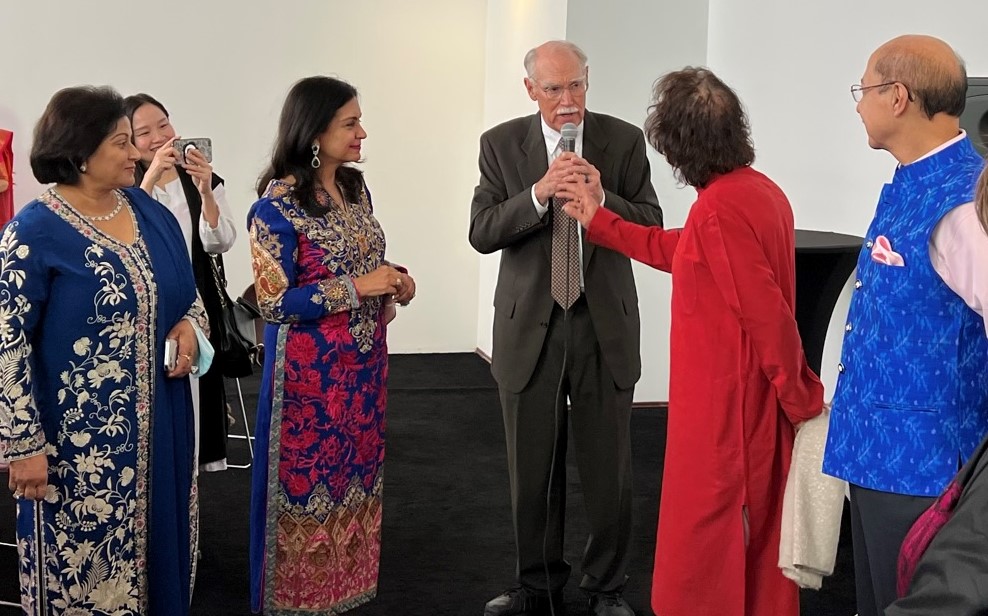
Prior to the evening recital, around fifty guests attended a special meet-&-greet with the dynamic and engaging Mr. Hussain, along with Ms. Ramnath and Ms. Kumaresh. Mrs.Nita and Mr. Sunil Wadhwani, well-known to the readers, hosted the reception in the Byham Theater’s Fulton Mini lounge, overlooking the Allegheny River. Mr. Hussain and his musical colleagues interacted with guests, posed for pictures and selfies, and signed autographs.
Mrs. Wadhwani, along with Cultural Trust President and CEO, Kevin McMahon, made remarks jubilantly welcoming Mr. Hussain back to Pittsburgh. Mr. Hussain also delivered heartfelt musings highlighting his excitement to once again be performing for live audiences, especially his devoted and enthusiastic fans.
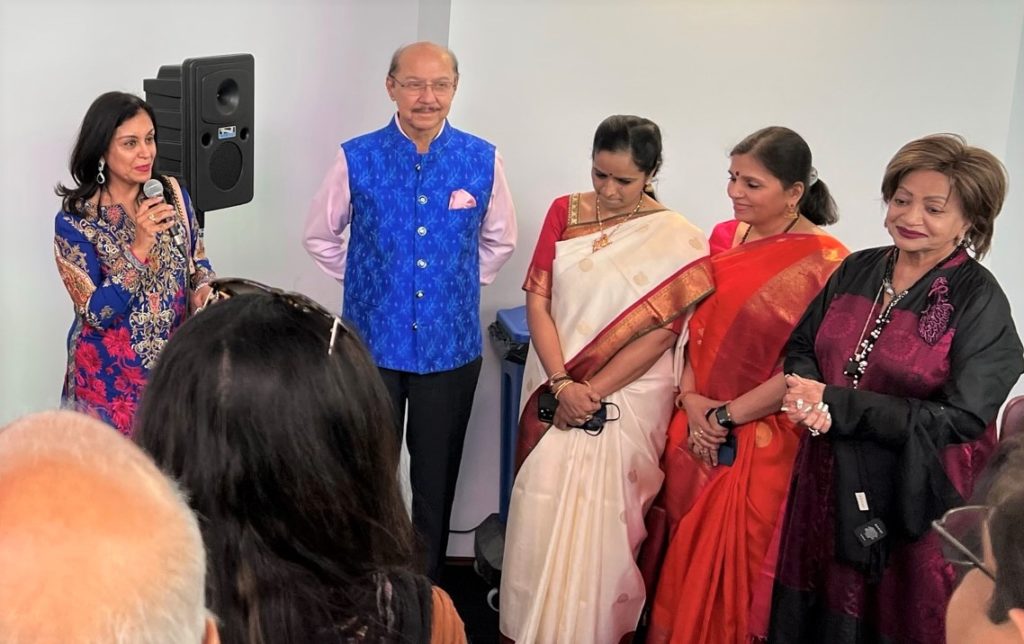
Mrs. Wadhwani is a member of the Pittsburgh Cultural Trust’s Programming Committee. Her husband, Sunil, is on the PittsburghTrust’s Board of Trustees. Also in attendance, among others, was fellow Cultural Trust Trustee, Sarika Goulatia, along with her husband, Dr. Amit Goulatia. ∎
The Regressive Reversal of Roe v. Wade
Posted by admin in July 2022, Past issues on July 6, 2022
Finally, on June 24, 2022, the Supreme Court overturned Roe v. Wade by a vote of 6-3. The 1973 Roe v. Wade ruling was given, interpreting that the “Due Process Clause” of the Fourteenth Amendment to the Constitution gives a fundamental “right to privacy” protecting a woman’s right to opt for terminating her pregnancy (aka abortion). The overturning of the 1973 decision was expected for weeks — social media was abuzz that it would be struck down, and the death watch was already in place.
This latest overturning of the 1973 ruling will cause a tectonic shift in all these rights and even beyond. The 1973 Roe v. Wade decision went beyond abortion: it included the right to contraception as well. Many states in the South, where social and religious conservatives run the government machinery, had already started imposing restrictions on abortion.
Striking down Roe v. Wade has always been in the campaign promises of many Republican presidential and congressional candidates in elections. But it gained momentum during the Reagan presidential campaign in 1980. It was ironic that the B-grade Hollywood actor, Ronald Reagan, in the 1980s, made this a campaign promise when running against Jimmy Carter, an Evangelical Christian, to woo the religious conservatives led by the Rev. Jerry Falwell. And Reagan struck gold!!
Ever since, every Republican presidential candidate has promised to appoint judges to the Supreme Court to strike down Roe v. Wade to appeal to social/religious conservative voters. Of course, the maverick Republican Donald Trump appointing three justices to the Supreme Court made this easy. Nobody will miss the irony that the thrice-married Trump, a playboy with a promiscuous, unrestrained, philandering — you pick the adjective — lifestyle throughout his adult life, made this happen! Predictably Trump took credit for the decision, keeping the 2024 presidential elections in mind: “Today’s decision, which is the biggest win for life in a generation … was made possible because I delivered everything as promised.”
Americans have always been divided on the issue of abortion. Those opposed to women’s need to have the options on reproductive matters prophesied that rates of abortion will rise and promiscuity among teenagers would lead to more pregnancies. Much to their chagrin, this did not happen (see the graphs). On the contrary, better sex education and dissemination of correct information resulted in fewer teenage pregnancies.
Similarly, as working women focused on their careers, the birth rate too declined. The blame for this is the abysmal state of paid maternity/paternity benefits and the prohibitive cost of childcare for working class families.
Some states rushed to ban abortions altogether (the count is now seventeen) and many more will join them in the coming months. Now, in many of these states, abortions will be accessible only to those women with money to travel to states where abortion is still available, who have the resources to pay for the service and stay in hotels, costs that may run into a few thousand dollars. But abortion numbers are closely tied to the poverty level of women. See the table below:
Low-income rural and urban women of all ethnicities in the American context, who cannot afford to pay for the abortion, are the biggest victims of the US Supreme Court decision. These women, already burdened with low wages and higher unemployment with less access to medical facilities, will be victimized for this over-reach of the Supreme Court.
In the post-feminist era, a new generation of women took the victories of the feminist movement for granted. With better access to education and better paying jobs, many felt complacent about the freedoms they enjoyed. They will have to start the struggle all over again to gain control of their reproductive rights. Now, there will be a new respect for the earlier feminists who fought and won concessions to gain control of their reproductive rights — from sex education/contraception to abortion.
So, where are we headed from here? For starters, restrictions to abortion in many states are likely to increase the serious complications for women and infants during childbirth. Further, where abortion is not legally available, outcomes for medically high-risk births will result in dangerous situations, mostly for low-income, less educated women. This should be of grave concern for public health administrators, irrespective of their ideology on women’s reproductive rights.
Fixing this problem requires a long-term outlook. Electing more women who are pro-choice — not just in Congress, but also in state and local government — is necessary to bring women’s issues into public focus. Not just reproductive rights, but paid maternity/paternity leave, and helping families with childcare costs.
What should young parents do now? It is important now more than ever that parents with young children take on the important duty of educating their daughters and sons as well — and particularly sons, one might say — on their personal responsibilities in their interactions with their peers of the opposite gender. Discussing openly and freely in the home in one-on-one discussions and in schools is imperative for saving our children from the horrible consequences of pregnancies when they are themselves children.
This regressive decision by six judges of the Supreme Court, prompted solely by their partisan politics and conservative ideology, is deplorable to say the least. Deplorable because this decision
a) reverts an already settled issue,
b) is intrusive in our cherished right to privacy,
c) completely ignores the widely available socioeconomic statistics of unwanted pregnancies that are cruel to the working class and poor disadvanged women of all races and color, and
d) overlooks the advances in medicine in detecting serious fetal defects resulting in a huge burden on all women, families, the healthcare system, and taxpayers when women are forced to carry to terms their high-risk pregnancies. ∎
Juginder and Dolly Luthra: Reviving Weirton’s Festival of Nations
Posted by admin in January 2015 on June 14, 2022
By Nandini Mandal e-mail: nandini@nandanik.com
Note: Nandini Mandal, the artistic director of Nandanik Dance Academy, recently spoke to Juginder and Dolly Luthra of Weirton, WV, on their participation in reviving Weirton’s Festival of Nations, last held in 1944. She met the Luthras at CMU.
Their story started as a Bollywood-style romance. From the forced migration during India’s painful Partition in 1947, to fifty years later, reviving a defunct Festival of Nations in Weirton, WV, through organizing an Indian Cultural Day there. And their story still continues.
He was born in Multan, in Pakistan now. His family, like other millions, was uprooted during the 1947 Partition and settled down in Panipat, in today’s Haryana, India. Seventh child in the family, he joined the medical school in Amritsar in 1961, obeying his father’s decision.
Three years later, a lovely young lady joined the same medical school in dentistry. Originally from Bombay, she moved to Chandigarh as her father was part of Le Corbusier’s architectural team that built Chandigarh. At the college social, they were part of the play together, with the lovely woman getting the best actress prize. He, Juginder, was in his third year, and she, Dolly, was in her first. And the rest was their destiny together.
Juginder and Dolly were married in 1968, and they moved to the U.K. in 1974 with their first daughter Namita. Juginder Luthra, an ophthalmologist, got his advance diploma in UK. Soon after, their twin baby girls, Rohini and Rashmi, arrived. The Luthras eventually wanted to reach the US shores.
With America still recovering from the Vietnam War, there was a dearth of qualified and experienced doctors in many cities, including Weirton, WV. One of his friends already in Weirton asked him to come to Weirton to practice medicine. In 1975, the Luthras arrived at Weirton with their three daughters.
While Dolly stayed home for eight years to raise their daughters before starting her dentistry practice, Juginder worked as a house physician at the Weirton Medical Center. Weirton was now their home away from home. Juginder recalls, “Our neighbors embraced us, giving us car rides, taught us driving in our very early days as immigrants.”
To find out how this Punjab da puttar (son of Punjab) became intertwined with the heart and soul of Weirton decades later, we need to understand Weirton’s history built around steel. The economy of Weirton (population 30,000 at its peak) was driven by the steel mill with 13,000 employees at its peak.
In 1909, Ernest T. Weir established a Tin Plate Mill near Holliday’s Cove, a farming village, calling it Weirton, an unincorporated company town. With the expanding mill and an influx of European immigrants, Weirton was incorporated in 1947 by merging several neighboring communities around the mill.
As is the case with all steel towns in the US, Russian, Polish, Greek, Slavic, Italian, Finnish, Hungarian, Welsh, Dutch, Spanish immigrants, and native African-Americans flocked to Weirton in the early 20th century. The interactions among the disparate immigrant groups were not always smooth. A large number of immigrants living in close proximity in a small, isolated town without a strong common American identity was a cause for concern for leaders of the community.
So, in 1934 Weirton’s civic and business leaders conceived a Festival of Nations to foster a sense of fellowship and social and cultural interactions among the ethnic groups. They wanted to showcase the diverse culture in a noncompetitive atmosphere. They succeeded in their mission, and until 1939, the Festival of Nations continued in this spirit with ten nationality groups’ participation in the thousands.
Then World War II started in 1939, ending in 1945. The returning victorious soldiers and the people at large were forged with a common American identity. With this, the rationale for the Festival of Nations too ended, the last one was in 1944.
Good times roared for decades. But with steel’s decline in the 70s, Weirton was devastated like other US towns built around steel. Today Weirton’s population is only 19,000, with only 1000 in steel! Weirton is a now a bedroom community to people working in Robinson Township and the Airport areas.
Flash forward to 2006. The Luthras, now well-established in Weirton, and both ardent art lovers and patrons, decided to showcase India’s dance and musical extravaganza to the people of Weirton. They dipped into the Indian talents in Pittsburgh with artistes trained in India’s rich musical and dance traditions. Sponsored by the Weirton Area Museum and Cultural Center, the Luthras organized the event with Nandanik Dance Academy, Nidrita and Asish Sinha, and Sushanta Banerjee performing in an hour-long program. It was a hit with the audience.
Impressed by the event, Weirton Mayor William Miller, surprised the Luthras by declaring November 18, 2006 “India Heritage Day” in Weirton. The Luthras, now members of the Board of Directors for the Weirton Area Museum and Cultural Center, added a new dimension to Weirton’s cultural landscape.
Then came the Weirton’s centennial in 2009. In a meeting participated by Weirton’s civic and business leaders and community organizers, old-timers wanted to revive the Festival of Nations. Juginder says, “Many of us, including those who have lived here for a long time, had never heard of it before. When they heard about the festival from old-timers, everyone asked me, Why don’t we create something like you did on India?'”
Weirton’s glorious legacy, now seen through faded photographs and recalled by elders helped in its revival in 2009. The Luthras were active for three years — they were the chair and co-chair of the organizing committee — trying to reconnect to Weirton’s past with help from countless citizens of Weirton.
The Festival of Nations was re-started in 2009 with a parade, all singing We are the World at the Municipal Building, with artistes from Weirton and its extended neighborhood including Pittsburgh participating
Every year, attendance improved, starting from mere 400 to over 1600 people this year with twenty-one ethnic groups participating. Indians, Chinese, Koreans, and Japanese are the new entrants. People come back to participate in the parade, buy artifacts from display tables, and taste the featured multiethnic food. The Luthras made sure the gala started with an invocatory piece by Dell Fryer, or Chief White Panther, a Delaware Native American chief.
Now having acquired a building for the museum with a grant of $30,000 from the J.C. Williams foundation, the Luthras and their fellow townsmen are pleased that they were able to revive the Festival of Nations. While recognizing that the festival had seen better days in the past, they hope that it will grow in the years ahead.
Dolly Luthra says, “When my father, a PWD (Public Works Department) engineer, was part of the team that built Chandigarh in India, little did I know that decades later, I will be involved in trying to rebuild another city not physically, but culturally, far away from India. That is very satisfying to me.â€
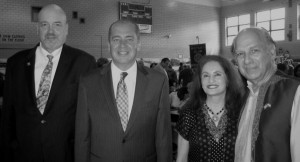
The Luthras are also path breakers in other ways. They are the founding members of Triveni, a cultural organization with Bangladeshi, Indian, Pakistani members to share the common ethos of the Indian subcontinent. Under the Triveni banner, in 2010 the Luthras were instrumental in showcasing the creativity of visual artists among Indians in the Pittsburgh Metro area under one roof in Monroeville to display their works.
Soft-spoken and warm, the Luthra’s dedication to Weirton that has seen better days is admirable. The Luthras went forward with the limited resources they had.
Along the way, in their efforts to rebuild the Weirton’s glorious legacy, they have befriended a diverse cross section of people in the community. Weiron too, has embraced them even tighter than before. ∎
British Airways Revives Its Nonstop to London Heathrow from Pittsburgh
Posted by admin in April 2022, Past issues on April 14, 2022
British Airways resumes its nonstop services to London Heathrow starting in June, four days a week. On Tuesdays, Wednesdays, Fridays and Sundays the flight departs from London Heathrow at 4:45 p.m. and lands in Pittsburgh at 7:50 p.m. The return flight will depart Pittsburgh the same day at 9:50 p.m., arriving in London at 10:10 a.m. the following day
.British Airways started the service to Pittsburgh in 2019. The flight operated successfully for a year before Covid-related travel restrictions led to the flight’s suspension in 2020.
The flight is expected to generate more than $50 million annually to the Pittsburgh regional economy. For people traveling to the Indian subcontinent, this convenient flight offers several options to reach many big cities with one stopover in London Heathrow, and all second-tier cities via Dubai, Abu Dhabi. Qatar, or through Mumbai and New Delhi. ∎
रामायण सारांश में
Posted by admin in April 2022, Past issues on April 14, 2022
लेखक: जुगिन्दर लूथरा, वियर्टण, पश्चिम वर्जीनिया
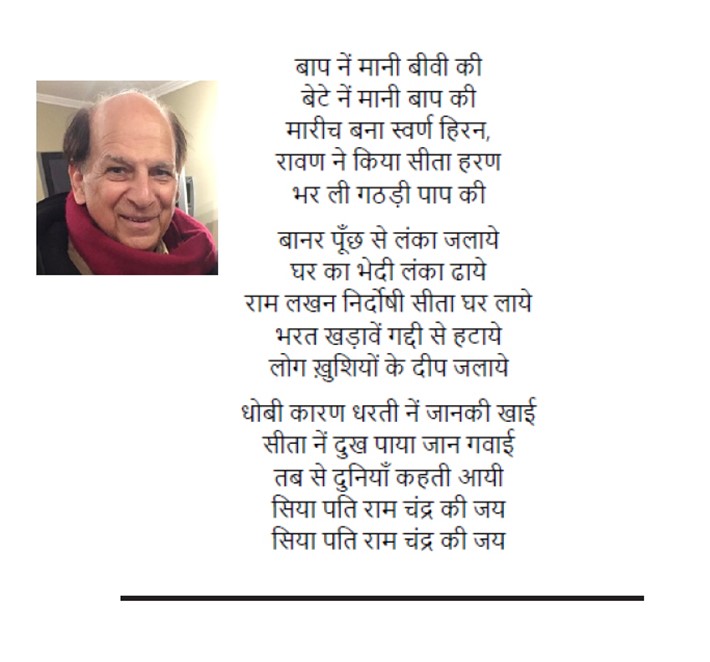
Summary of Ramayan
By Juginder Luthra, Weirton, WV
Father agreed with what wife said
Son agreed with what father said
Marich transformed to a golden deer
Ravan kidnapped Sita
Filled his bag of sins
Monkey burnt Lanka with his tail
Lanka fell by leaked family secret tale
Ram Lakhan brought innocent Sita home
Bharat removed sandals from throne
People joyfully lit lamps in homes
Due to washerman, earth swallowed Janaki
Sita bore sufferings, even lost her life
Since then people keep saying,
“Victory to Sita’s husband, Ram Chandra!”
“Victory to Sita’s husband, Ram Chandra!” .∎
“The Kashmir Files” Portrays the Brutal Genocide and Exodus of the Kashmiri Pandits
Posted by admin in April 2022, Past issues on April 12, 2022
By Bupesh Kaul, Squirrel Hill, PA
Bupesh Kaul, a resident in our area for over twenty-five years, is a practicing physician, now in semi-retirement. He was an associate professor at the University of Pittsburgh School of Medicine. This is his review of Vivek Agnihotri’s acclaimed film The Kashmir Files.
The release of the movie, The Kashmir Files, has led to a renewed interest in the happenings in the verdant vale of Kashmir over three decades ago. The history of Kashmir is very tangled and complex — as all history usually is.
In the Indian context, Kashmir was an important center for learning — arts, literature, religion, and spiritual quest -— a place where Adi Shankaracharya preached as he revived Hinduism during his travels in the eighth century, CE.
The advent of Islam in the valley in the 14th century, though initially comparatively peaceful, became particularly brutal for the Kashmiri Hindus (Kashmiri Pandits) resulting in mass conversion to Islam, not always by persuasion. At one point, only a small number of Hindu families were left in the valley. Following the Anglo-Sikh war in mid-19th century, Kashmir, which was a part of the Sikh Empire and was mostly Muslim, was “sold” to the Raja of Jammu by the British for a princely sum of 75 lakh Nanakshahi Rupees. The State became Jammu & Kashmir (J&K).
In August 1947, J&K had four distinct regional ethnicities. The Kashmir Valley (Kashmiri), Jammu (Dogri), Ladakh (Ladakhis) & the Northern territories (Gilgit and Baltistan). The Valley had a Hindu minority, about 2-3% of the population. The Kashmiri language was spoken only in the Valley.
It is beyond the remit of this article to trace or debate the political machinations, calculations, and intrigue from 1947 to 1990 that led to the exodus of the minority Kashmiri Pandit community from the Valley in 1990. But what is indisputable is that a premeditated, calculated effort was made to rid the Valley of its Hindu natives. Long before the term “ethnic cleansing” gained currency in the West, it was a reality for the minority Hindu community in the Kashmir Valley. A targeted and carefully orchestrated campaign resulted in a premeditated brutal murder of scores of Pandits that led to the mass exodus of the minority Hindu population from the Valley.
The film also brings into sharp focus the inability/unwillingness of the Indian state and its media to recognize this issue as an Indian issue instead of seeing it as a Kashmir issue. The film does not portray the planning, coordination, and orchestration of the attacks by India’s immediate neighbors. Excepting for this and other minor quibbles, the movie graphically captures what should only be called genocide by terrorism, leading to the exodus of almost all Kashmiri Pandits from the Valley.
Watching the movie at the Waterfront Multiplex, I and other members of the Pandit community had a cathartic release, with many in the audience sobbing through the screening. The makers of The Kashmir Files do not shy away from making bold statements and that is the strength of the movie.
The director, Vivek Agnihotri gives voice to alternate viewpoints for which he needs to be commended. The Pandit community hopes this film will initiate a dialog to bring out the deafening silence by both the media and a spate of weak, corrupt politicians and officials who conspired, perhaps unwittingly, to condemn the whole Pandit community to become refugees in their own land. And bring to justice the perpetrators of the murder, loot, rape, and pillage perpetrated on a peaceful community.
The Pandits believe in the idea of India and in law and order, and not in vigilante justice. Which is why not one Kashmiri Pandit picked up a gun to avenge the murderous wrongs perpetrated on the community. ∎
Coming of Age for Indian Americans in the ‘Burgh
Posted by admin in April 2022, Past issues on April 12, 2022
People of Indian origin in our area, while continuing with their careers as professionals and entrepreneurs, are expanding into public life in elected offices in schools and local governments.
Last December, Ravi Balu and his volunteers felicitated three members of our community who made small steps in their public lives by seeking and getting elected to various offices. They are:
Bhavini Patel (Democrat), the council member of Edgewood Borough; Veena S. Szymkowiak (Republican), Board Member of the North Allegheny School District; and Mandal Singh (Democrat), Director, the Gateway School Board.
Ravi Balu organized a well publicized event open to the public at the Triveni Center in Monroeville. He introduced the three elected officials, giving them the podium to talk about what motivated them to seek elected public offices in the midst of their busy careers and entrepreneurial commitments. There was also a Q/A session at the end. ∎
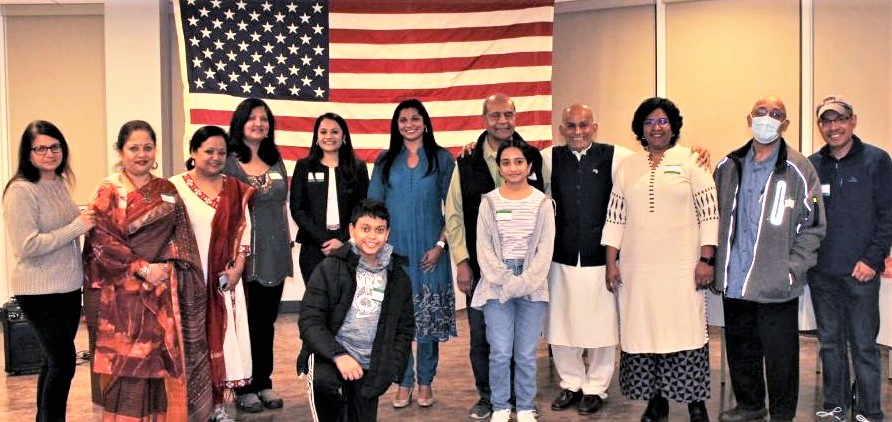
Snow Leopard Expedition in Ladakh
Posted by admin in April 2022, Past issues on April 12, 2022
By Nitin Madhav, Washington, DC
Nitin Madhav was born and raised in Pittsburgh, graduating from Penn Hills Senior High School and the University of Pittsburgh. After his bachelor’s and two master’s degrees, he began working in public health in several countries around the world. He has traveled extensively and is an avid photographer. His work is on nitin.photography and on Instagram at @nitinmadhav.
I have never packed fourteen pairs of long underwear for a trip to India! When my friend, Behzad Larry, invited me to join him on an expedition to see snow leopards in Ladakh in November — he warned me it would be cold — I jumped at the opportunity since this was not the usual thing a guy from Pittsburgh does. I have been to India many, many times to visit family or for religious festivals, but never had to pack for the cold. This was a first — a snow leopard safari in the high mountains of the Himalayas.
Behzad worked with his Ladakhi partners, Abdul Rashid and Dorjay Stanzin, to set up a camp for snow leopard safaris near Hemis National Park (32 miles from Leh at 16,000 ft elevation), which has only about 70-80 of these cats, out of a worldwide population of about 3500.
Behzad, who is from Indore, India and an accomplished wildlife photographer-turned-conservationist, saw a void in the tourism experience that Ladakh offered. While most people came to Ladakh to trek, there is an incredible story for these visitors to share with people interested in wildlife, especially the critically endangered snow leopards.
Conservation in India has seen a positive change in the last few decades. While there is still human/animal conflict where man is encroaching on wildlife habitat, there is a renewed urgency in maintaining the biodiversity of India. There are several national parks where one can see tigers, but few with the world’s most elusive big cat — snow leopards. Ladakh happens to be the place with the highest concentration of snow leopards in India.
The altitude is important to factor into travel plans in Ladakh. I flew from Delhi to Leh, the capital, and spent two days acclimatizing to the high altitude. I am pretty fit, but still found simple tasks like putting on my shoes left me gasping for breath. Behzad told me that this was normal, and I would acclimatize in a few days, which I did.
Since I have been on many safaris across Africa, the Ladakhi experience is not significantly different… just miserably colder. Behzad works with highly skilled spotters who can identify snow leopards on high mountain ridges from great distances, sometimes up to seven kilometers away. They depart early in the morning, radioing back to camp when a cat has been spotted. Then, we bundle up, grab our cameras, and hop into the jeep.
Snow leopards are most active at dawn and twilight, so it is key to make the most of this time. The spotters look for blue sheep, known as bharal in the local language. A hungry snow leopard will often target blue sheep in its hunt; so, if these local experts spot these sheep, it is most likely that a cat is somewhere around.
Snow leopards camouflage themselves in the rocky terrain. They roll around in the dirt before stalking bharal, covering their coats in soil. Their spots make them blend in with rock formations, making them difficult to spot. Thus, it is important to work with trained spotters who know what to look for. Sometimes, the spotters will see a cat and will try to track it; however, the cat will disappear over a mountain ridge. They carefully scan the mountains paying attention to the bharal and the condition they are in. If they are agitated or seem on edge, a snow leopard could be nearby. Sometimes the wait can take all day in the cold, which is why I made sure to pack all those long johns!
While there are others that offer snow leopard tours, it is vital to ensure that these are done ethically, without baiting the cats. When snow leopards are baited, it creates the expectation that domestic livestock are easy prey for the cat — which leads to ongoing human/animal conflict as herders can lose their entire herd to a snow leopard, and they, in turn, would prefer to kill the snow leopard to avoid future losses.
The first time I saw a snow leopard, I mistook a group of bharal for bushes, and I asked Behzad to stop for a second, when one of our trackers hollered “Snow leopard!” and indeed, it was. It was a scruffy beast, not at all like the supermodel snow leopards I had seen in photos. This was a beast who had worked hard to find every meal — and he slowly approached the bharal which fled in fear — but not before Behzad got a few shots of the snow leopard close to the bharal.
The next day, we got a call telling us that a snow leopard had gotten trapped overnight in a shepherd’s corral in a village about an hour away, and were invited us to take part in its rescue. The snow leopard snuck into a corral at night. The shepherd heard the commotion of the cat attacking the sheep, and let the other sheep out and locked the gate with the snow leopard captive inside.
The Indian Wildlife Service rangers came by, tranquilized the snow leopard and after it was sedated, brought it out of the corral and took some biometric data before releasing it into the wild.
While it was sedated, I got to pet it and be a part of the biometric measuring. It was a beautiful male cat about five years old. I have been told many times that that is an unusual occurrence — I am the only one who has had a chance to do that, of the several hundred people who have gone on Behzad’s expeditions. It was an experience I will never forget — which made the trip so much more worthwhile.
Behzad kept saying he didn’t know if he could top that experience, and to be honest, nothing quite as interesting happened the rest of the trip. But this was the thrill of a lifetime.
If you are interested in a snow leopard expedition in either Ladakh or Kyrgyzstan, Behzad is offering a discount to readers of the Pittsburgh Patrika — mention that when you contact him on his website: https://voygr.com/ ∎
Obituary: Parvathi Gutti (1944 – Dec 17, 2021) Anesthesiologist, Affable & Anchor to Her Husband
Posted by admin in April 2022, Past issues on April 12, 2022
By Nangali S Srinivasa, Murrysville, PA
Parvathi Gutti, a long-time resident of Jeannette, Pennsylvania passed away surrounded by her family on Friday December 17, 2021, after an abdominal surgery needed for a complicated medical condition.
She was born on January 12, 1944 in Brahmapura, a small village in Krishna District, Andhra Pradesh, India. Her father Perrysetti Subbiah and mother Mahalakshamma were traditional weavers. Parvathi was the last of sixteen siblings. Born of humble beginnings, she was the first girl in her village to get a formal education, which led her to earn a medical degree from the Andhra Medical College, Vishakhapatnam, the oldest and a top-ranked medical college in Andhra Pradesh.
Losing her parents when she was very young, Parvathi was raised by her elder brother. Being the youngest of sixteen children, she was content with household chores. She started school when she was nine, on the recommendation of her home-school teacher, who recognized her intelligence. In small villages in those days, girls were not sent to school. During her school days she was acquainted with a Kuchipudi dance student, who was the younger sister of Varaprasad Gutti Rao, whom she would later marry. With financial support from others, Parvathi went to Hindu College in Machilipatnam, a nearby coastal town. Later, she earned a scholarship to go to Andhra Medical College, Visakhapatnam.
Soon after graduation, she married Varaprasad in 1968 before he went to Rensselaer Polytechnic Institute in Troy, NY, for his PhD in Nuclear Engineering on a NASA fellowship. Parvathi joined him, pursuing her studies in anesthesiology at Albany Medical Center, later completing a 6-month Fellowship in Gyne-Anesthesia at the Yale University hospital.
The Guttis moved to Latrobe in 1974 where she joined the Latrobe Area Hospital, which later became part of the Excela Health System and worked as a staff anesthesiologist for nearly 48 years. She started the first Pain Clinic in Westmoreland County, becoming the chairman of the Department of Anesthesiology at the hospital. She was an early donor for the expansion of the Latrobe Area Hospital in the 1990s and was the Co-Medical Director of the Westmoreland Latrobe School of Anesthesia during 1981 and 1986. She set up an annual award for outstanding nurse anesthetist. After retirement, she continued to work part-time. She was well liked by the physicians, nurses, and support staff who worked with her.
She loved the performing arts, especially Indian classical music, dance, and theater. She took keen interest in training her children from a very young age and developing them into mature artists. She served as a secretary of SPIFPA Foundation for performing arts, affiliated with the Pittsburgh Foundation and Community Trust.
A sheet anchor for her family and a strong supporter of her husband in many of his endeavors, Parvathi was quite stoic in accepting personal losses. In the early days of S.V.Temple in the 1970s, when people were not even sure of a need for the very idea of a Hindu place of worship here, Parvathi and her husband supported the concept by donating his very first month paycheck to the temple project. The Gutti family has generously supported the growth of the temple in many ways to this day.
Parvathi was well liked by members of the temple community for her simplicity, mild nature, loving spirit, and above all, her warm hospitality. She leaves behind her husband of fifty-four years of marriage, her daughter Bindu Madhavi, son-in-law Kumar Rachuri, and two granddaughters Krishnaa and Siri. A large number of her extended family and friends virtually attended the funeral at the Frederick Funeral Home, Latrobe. She was given a Hindu burial, with Shri Samudrala Venkatachayulu from the S.V.Temple helping the Gutti family with the religious rites.
From the Gutti Family: Thanks for Your Support in Our Time of Grief
Dear Friends: We thank you very much for all your help and support during our time of grief. So many of you offered your condolences, came to pay your respects and share in our grief, provided us with nourishment (both physical and emotional), gave us your shoulder to lean on, helped us with all the funeral logistics that we did not have the presence of mind to deal with and in so many other countless ways, big and small. Your thoughts, words and actions mean more to us than what you will ever know.
We owe our thanks to the S.V.Temple staff, Officers and the Board, including the temple community, as well as to the entire Pittsburgh Indian Community and the entire Excela Health Medical community.
So many of our personal friends went out of their way to care for us. Thank you all.
The Gutti Family and the Rachuri Family
Varaprasada Rao, Bindu, Krishna, Kumar, and Siri ∎
In the Globalized World, Even Internationally, All Politics is Local & Personal
Posted by admin in April 2022, Past issues on April 12, 2022
I read with anxiety Canadian prime minister Justin Trudeau’s warnings to the Canadian truck drivers’ mostly peaceful protest against the Covid vaccination, blocking truck traffic between the 2000-mile-long US and Canada border. These trucks provide smooth supply chains and logistical support between Canada, US, and even Mexico. They deliver parts for factories and move finished goods, industrial machinery, large volumes of agri and animal products, pharmaceuticals, medical supplies, and vital components for the auto and aerospace industries. Delivery delays from this protest were choking the already snarled post-Covid global supply chain costing billions of dollars to the economy. Consider this: In 2020 Canadian merchandise export to the US was $375 billion (70% of its total exports) and import from the US was $349 billion (62% of its total imports). And over 55% of US-Canadian merchandise moves in trucks.
So, Justin Trudeau, the Liberal Party Canadian Prime minister, with the truckers only a few days into their protest, assumed emergency powers to manage the strike. The last time this happened was when his father Pierre Trudeau declared an emergency fifty years ago during the violent protests (“terrorism”) by Quebecois.
Justin Trudeau’s warnings to the weeks-long truckers protest was stern. “It’s high time that these [striking truckers] illegal and dangerous activities stop… … They are a threat to our economy and our relationship with trading partners. They are a threat to public safety.” His other words of warning: “Blockages, illegal demonstrations are unacceptable, and are negatively impacting businesses and manufacturers. We must do everything to bring them to an end.”
“If you joined the protests because you’re tired of COVID, you now need to understand that you’re breaking laws. The consequences are becoming more and more severe. You don’t want to end up losing your license, end up with a criminal record, which will impact your job, your livelihood, even your ability to travel internationally, including to the U.S.”
Then, he leaned on President Joe Biden for support: “President Biden and I both agree that for the security of people and the economy, these blockades cannot continue,” Trudeau said. “So make no mistake, the border cannot and will not remain closed… Canada’s banks are governed by laws … that ensure funds cannot be used for criminal or illegal activity, and these blockades are illegal…” Trudeau said he updated U.S. President Joe Biden on the situation, including discussing the influences of U.S. right-wing citizens and foreign money funding this illegal activity.
The same Trudeau, last year, when farmers’ protests in New Delhi went on for over a year led mostly by Punjabi farmers with financial and political support from the active Canadian Punjabi diaspora, addressed the Sikhs on the Guru Poornima day with these words:
“I would be remiss if I didn’t start by recognizing the news coming from India about the protest by farmers. The situation is concerning. We are all very worried about family and friends… Let me remind you, Canada will always be there to defend the rights of peaceful protesters. We believe in the process of dialogue. We’ve reached out through multiple means to the Indian authorities to highlight our concerns. This is a moment for all of us to pull together.”
The Indian farmers protest was against the Modi government’s efforts to bring market reforms in the farming sector by giving additional options for farmers to sell their produce to whomever they want to sell, while a) preserving the minimum support price for their products guaranteed by the government, and b) retaining their option to sell their products to existing cartels in Punjab now controlling the grain market for over 60 years.
The Trudeauvian hypocrisy of supporting the year-long Indian farmers’ agitation blocking national highways around New Delhi in the middle of the Covid pandemic led by the Punjabi farm lobby on the one hand, while assuming emergency powers to quell the mostly peaceful just week-long protest of Canadian truckers is astounding. Remember, Justin, like his father, Pierre Trudeau, is the leader of the Liberal Party in Canada.
Trudeau’s political address to the Sikh’s in Canada on a religious festival (Guru Poornima Day), was not just out of political compulsion, with 17 MPs of Indian origin (many of them Sikhs) in his parliament, and four Indian-origin ministers (three of them Sikhs) in his cabinet.
Trudeau’s support for the farmers protest in India orchestrated by farmers from Punjab has a larger Canadian context. Today, of the over 300,000 truck drivers in Canada, nearly 20% are of Indian origin, more specifically, Sikhs. By comparison, in 1995, only 2% of the truck drivers in Canada were from the Indian sub-continent. In and around Toronto, Ontario and Vancouver, British Columbia, Sikhs account for nearly 50% of truck drivers.
And trucking being a lifeline for trade between Canada and the US, it is no wonder that Trudeau was trying to please not only the Sikh members in his cabinet and in the parliament, but also the nearly 60,000 Sikh truck drivers and many Sikh owners of trucking companies. The Sikhs are a vital link sustaining the Canadian economy. Incidentally, Punjabi-style dhabas are coming up in many truck stops across Canada and the US.
Trudeau was also trying to placate the 500,000 Canadian Sikhs, who are 50% of the Canada’s 1,000,000 people of Indian origin. In Canada’s population of 35 million, Indians are 3%, with Sikhs comprising of 1.5%. Remember, the population of Mumbai Metro area is over 20 million.
Pandering to his domestic Sikh constituency aside, there is no political or economic consequence for Trudeau in supporting the Indian farmers strike internationally. In the big scheme of things, Canada is a small potato for India. India’s foreign trade in 2019 is over $320 billion exports and $420 billion in imports, of which trade with Canada is paltry. Exports to Canada is only $2.9 billion and imports from Canada, $3.9 billion. For Canada too, trade with India is a small. The total volume of Canadian exports is $390 billion, and imports, $420 billion. Besides, Canada has no political gravitas internationally, being a weak second-tier partner in the Western alliance. In North America, the behemoth US dwarfs Canada in every measure.
This is perhaps why India’s foreign policy establishment ignored Justin Trudeau’s hifalutin support of the Indian farmers strike as his pandering to his Canadian Sikh constituency, purely for his domestic consumption. However, for Indians, Trudeau’s iron-fist way of managing the Canadian truckers’ strike brought his hypocrisy into sharp relief.
In 1996, Ralph Wright authored the book All Politics is Personal, and in 1997, Tip O’Neill, the famous Speaker of the US House of Representatives authored the book, All Politics is Local in the “local” US context. These books came out before the advent of social media. But with social media bringing everything into the open globally, seeing Justin’s Trudeau’s hypocrisy, one can say, even in international politics, All politics is personal & all politics is local as well.
An ironic end note: Many writers bearing Indian names were berating the Modi government in the American media for not negotiating with the farmers strike leaders last year. However, not one of them, to the best of my knowledge, had anything to say on Liberal Party Trudeau’s iron-fist tactics to break the mostly peaceful truckers strike in Canada. That is a fine example of the hypocrisy of left-leaning Indian and Indian-origin intellectuals among social and political scientists. ∎



